Route Nationale Sept – the RN7 Madagascar – is one of the primary roads in the magical island that lies off the southeast coast of Africa. The road stretches from Madagascar’s capital city Antananarivo (also known by its more pronounceable name, Tana) to Toliara in the southwest of the country.
Madagascar is a very special place. The island separated from the mainland African continent 150 million years ago and, as a result, much of the wildlife evolved in a very different way. For example, the primates found in Madagascar are lemurs, not apes and monkeys. You won’t see any of the Big Five animals here but a lot of the flora and fauna is unique to the island and is absolutely fascinating.
The great thing about RN7 is that it covers a long distance – nearly 1000km – and winds its way through a variety of beautiful and diverse landscapes. There are several national parks located within a few kilometres of the road and these offer plenty of wildlife viewing as well as opportunities to explore the local culture.
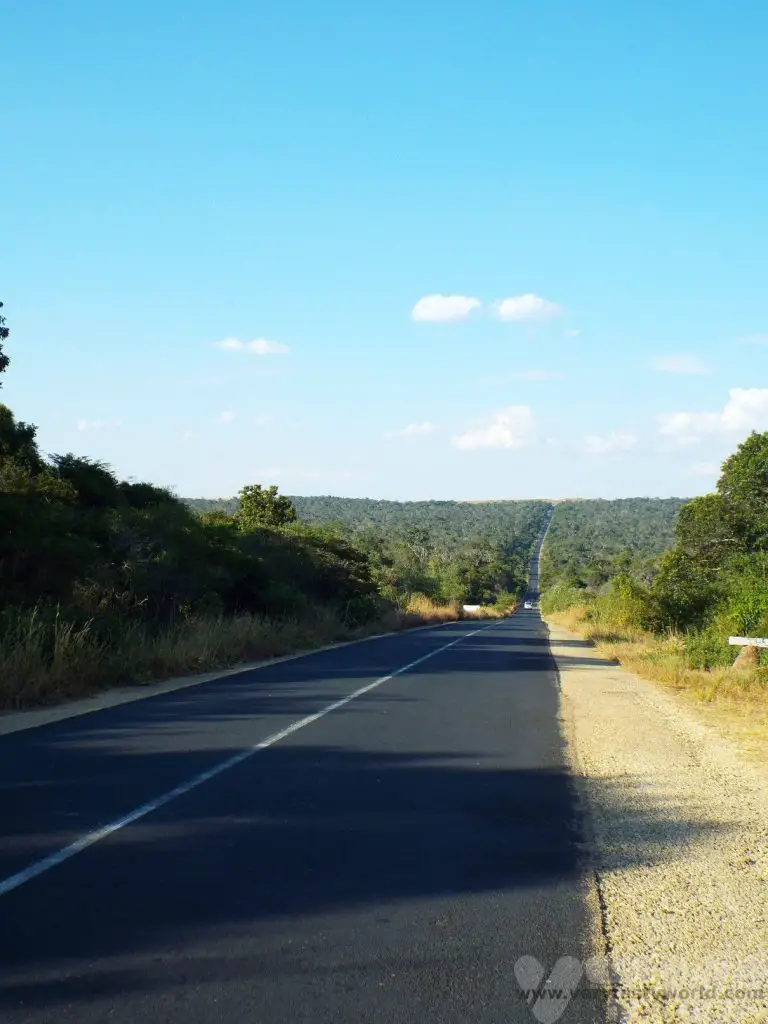
We travelled Madagascar’s RN7 from Toliara to Tana, having caught a flight with Air Madagascar to Toliara after our arrival in Madagascar, but it’s perfectly possible to do this trip in reverse. This journey took seven days to complete but can easily be adapted to spend more or less time at particular locations depending on your interests. We recommend a ‘mora mora’ approach to the trip. ‘Mora mora’ means ‘slowly, slowly’ in Malagasy – take time to travel and time to explore – it’s a very rewarding journey.

The travel times quoted here are the driving times and do not include the stops taken to enjoy activities along the way.
Toliara
Toliara is the major city in the Southwest of Madagascar. Located on the coast, Ifaty beach is perfect if you are after some seaside time.
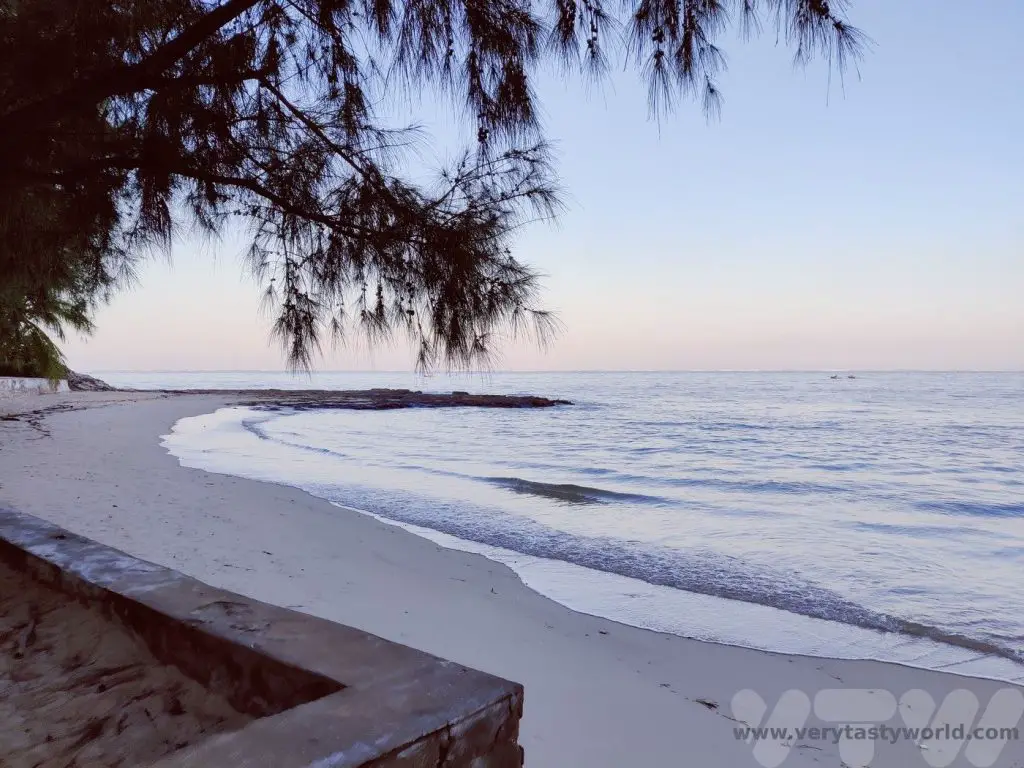
Toliara to Isalo
240 km (~4 hours)
We started our long journey at Toliara and enjoyed our first stop at the Antsokay Arboretum. This arboretum contains over 900 plant species, largely categorised as spiny forest, due to the hot and dry climate of the region. These plants are characterised by their ability to survive harsh conditions.
Following the short botanical trail we saw numerous different types of plant.
These included a number of species of fascinating elongated octopus trees which have small leaves and spikes. Some of them can be relied upon as a compass – they grow facing south to try to get moisture from any fog in the region.
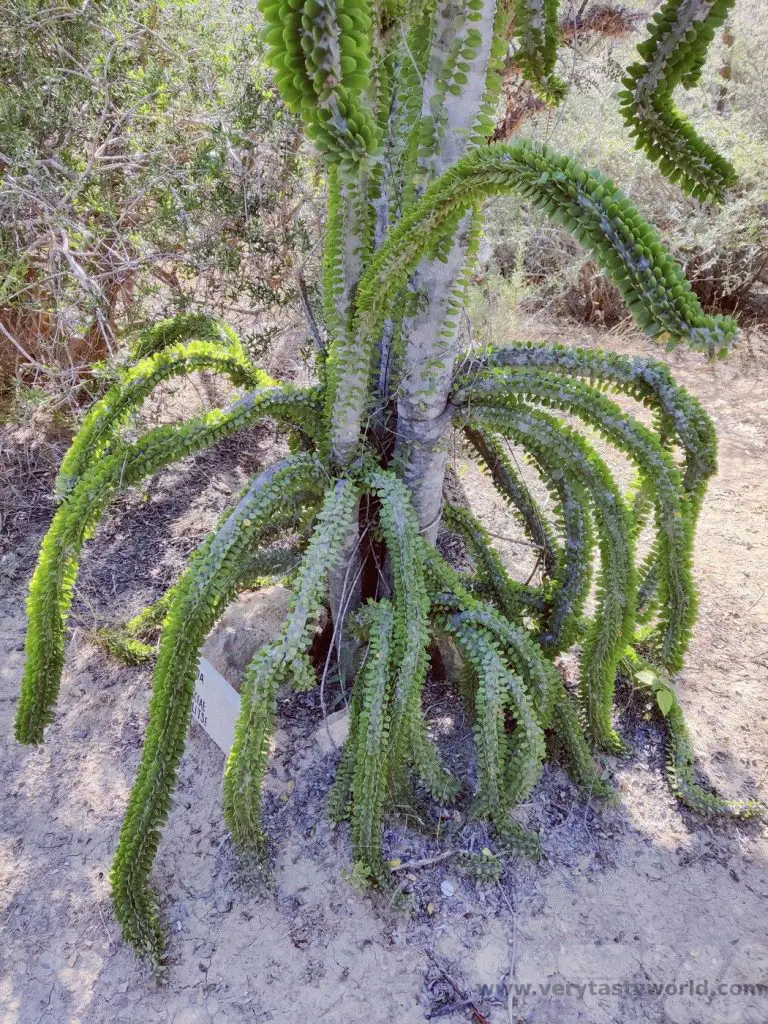
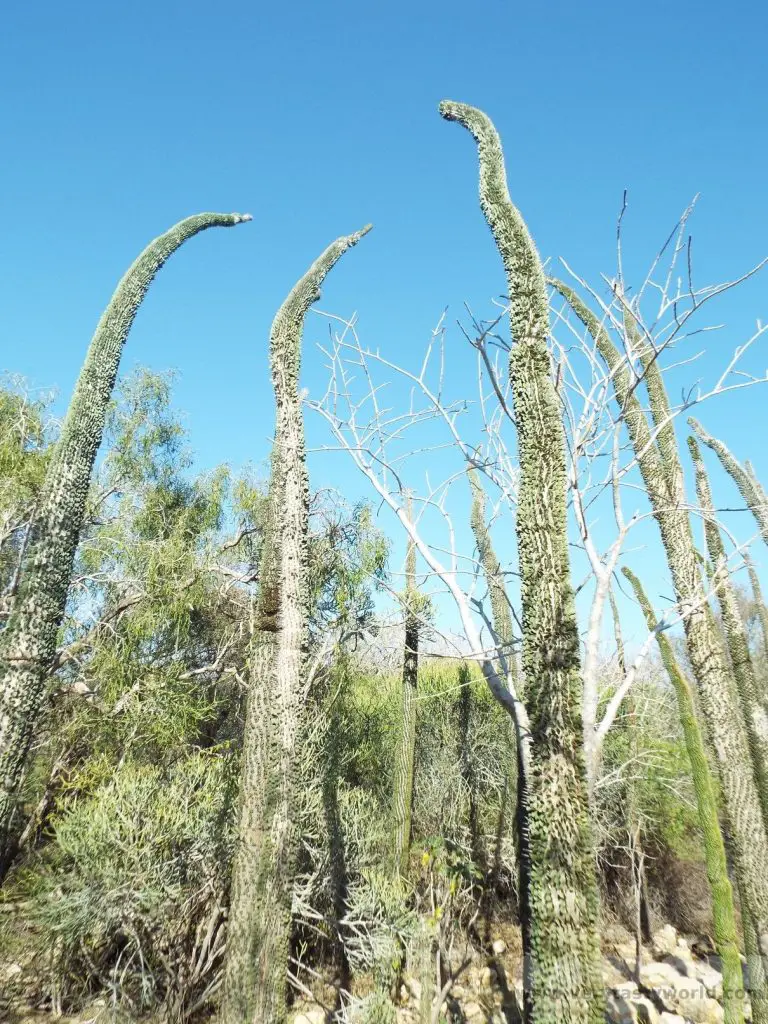
One of the best known species of tree in the region is the baobab, characterised by its huge trunk. This baobab was a teenager – only around 100 years old.

Some trees look like baobab but are fake. This one is known as an elephant’s foot.
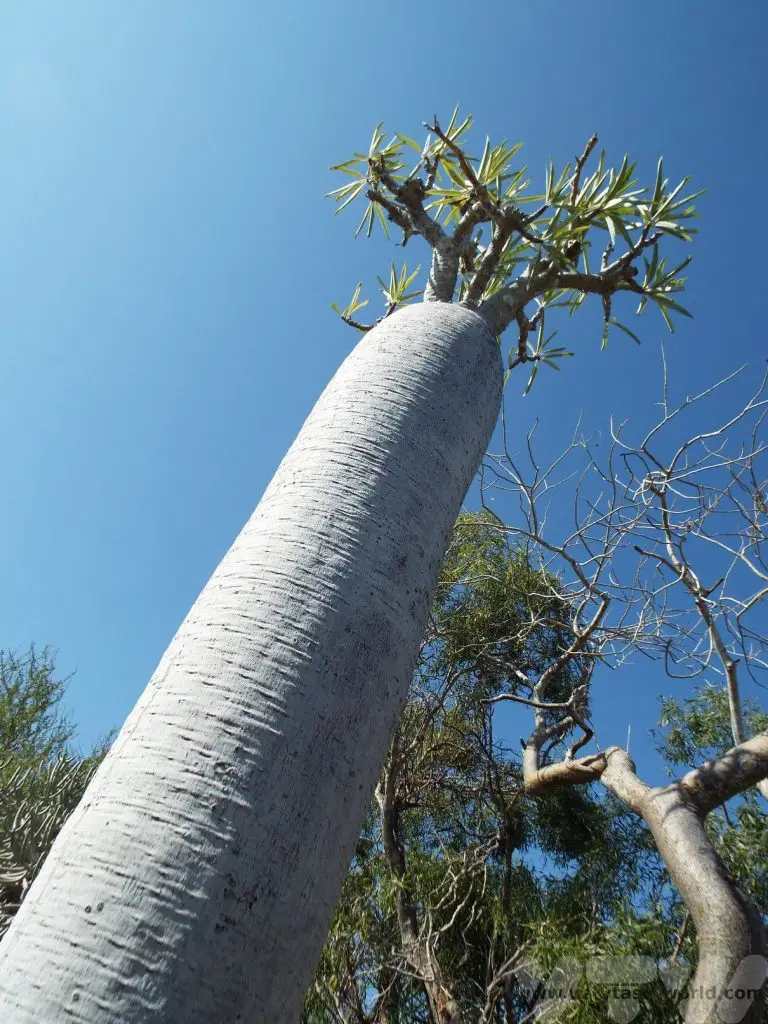
Malagasy people have an amusing approach to their mothers-in-law. The plant on the left, with its sharp points is colloquially known as mother-in-law’s tongue. And this cactus is called a mother-in-law’s cushion.
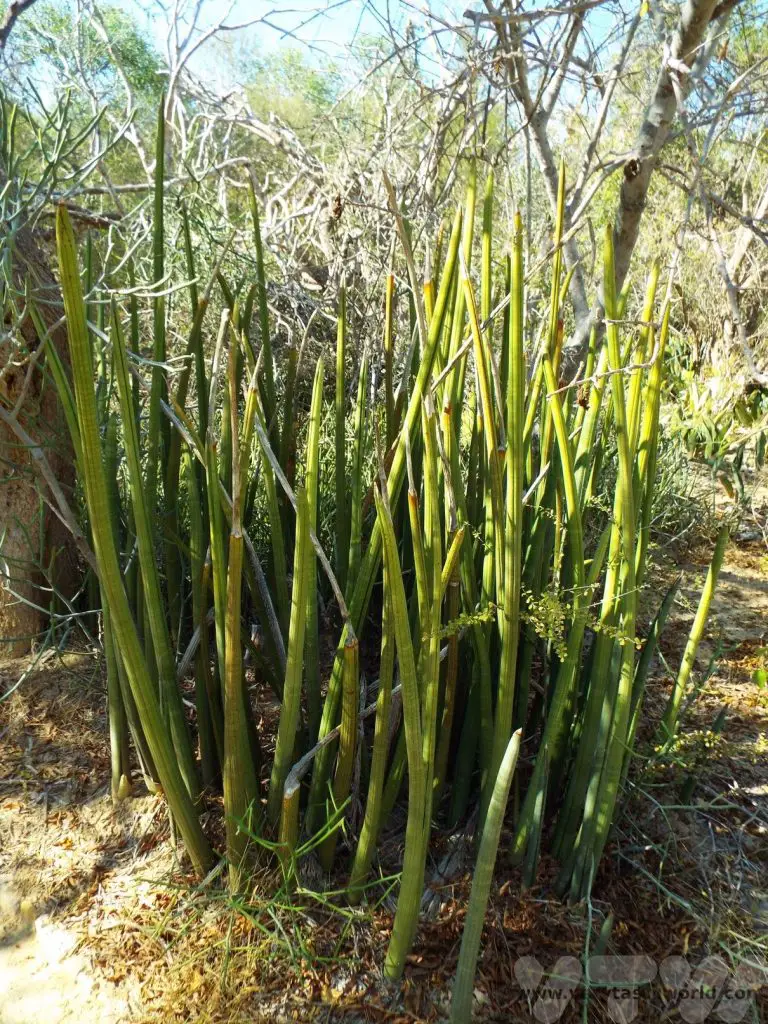
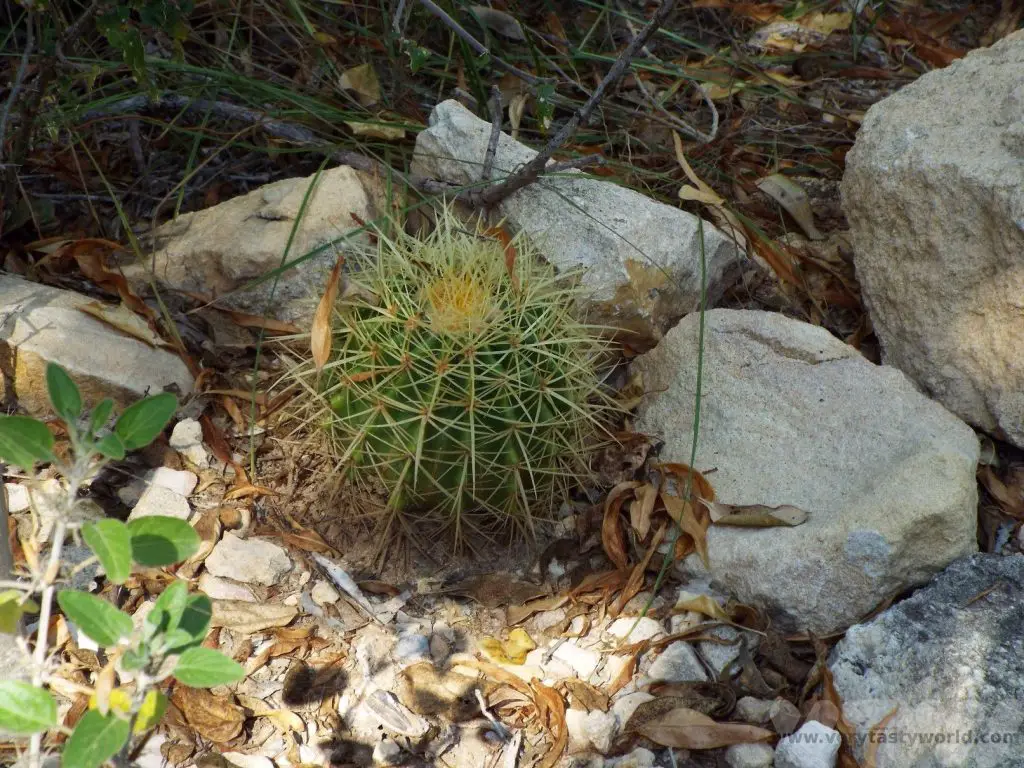
And we met our first chameleon. This was a male. He can change colour within a minute.
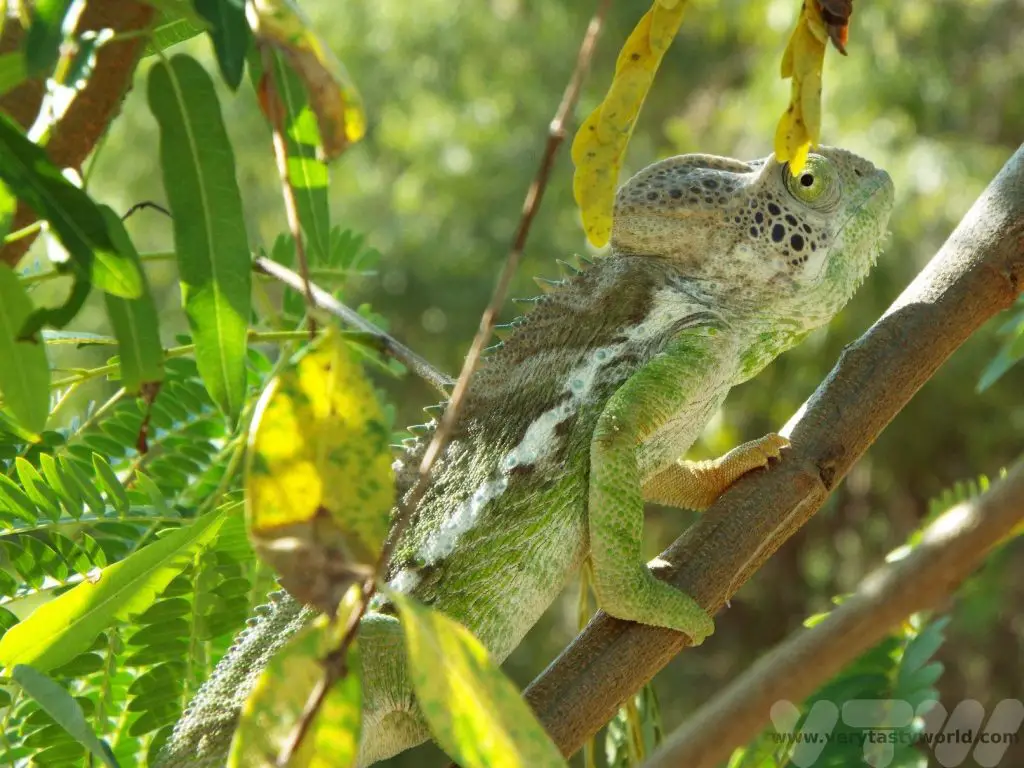
Then it was back on the RN7 for a couple more hours. Our next stop was Zombitse-Vohibasia National Park which is located around 150 km from Toliara. This is a dry deciduous forest – a transition area between the dry forests and more humid regions of Madagascar.
We particularly enjoyed viewing the baobab trees in this park. These remarkable trees predate human beings and can live for up to 5000 years. Their ability to store water in the bulbous trunk means that they can survive dry seasons as well as forest fires. They can grow up to 30m high and the biggest can be 50m in circumference. They have branches that look like roots. There is a legend that the baobab told god that it was the most beautiful of all the trees. Its arrogance angered the deity so much that he picked it up, flipped it over and planted it back in the earth upside down.
At Zombitse-Vohibasia there is a twin female tree which was 800 years old and a male that was 900 years old. Their roots are relatively shallow but can extend up to 50m horizontally underground in order to provide support for the tree.
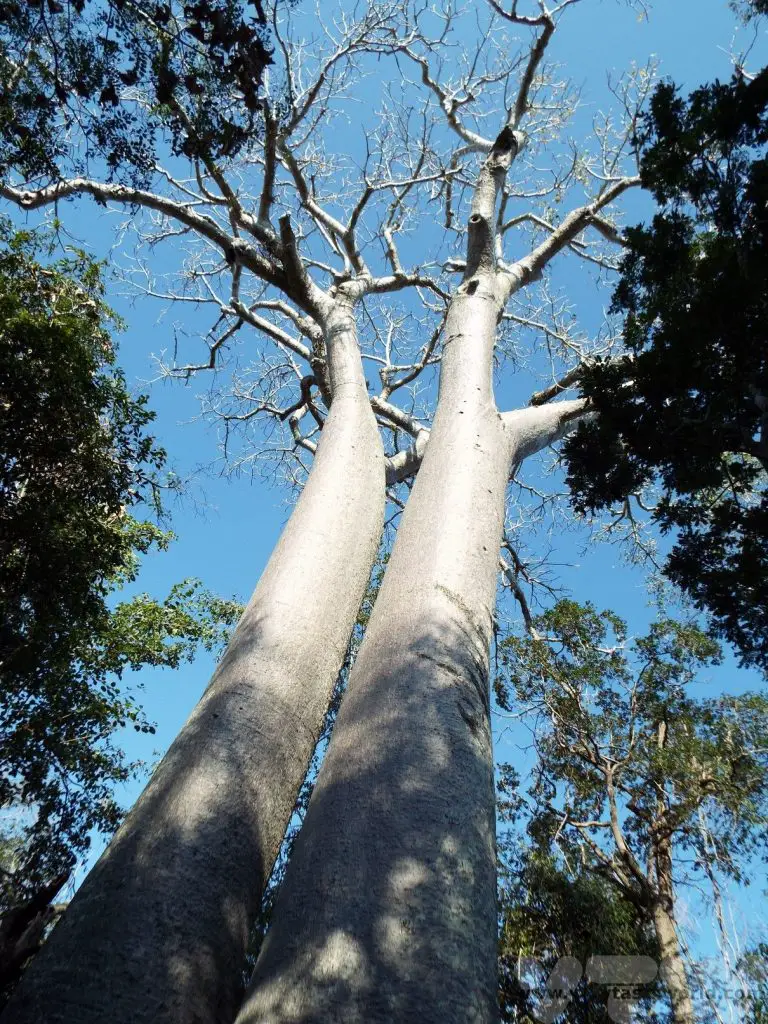

We also met our first lemurs. A nocturnal brown lemur who glared at us because he should have been asleep and a white sifaka.
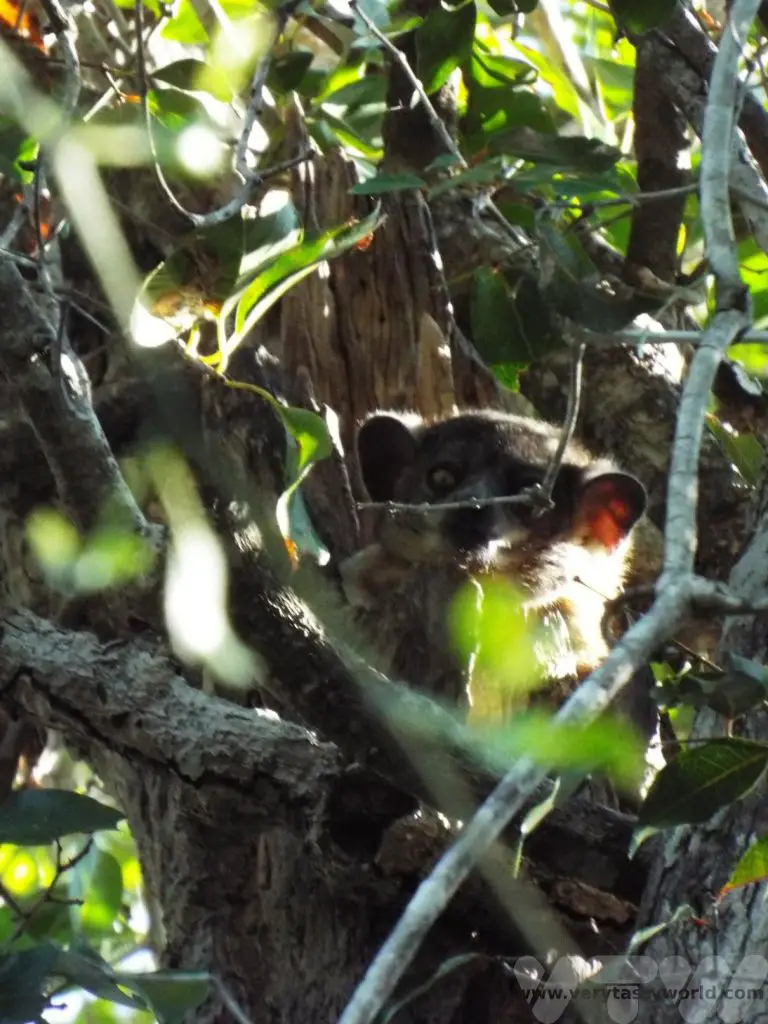
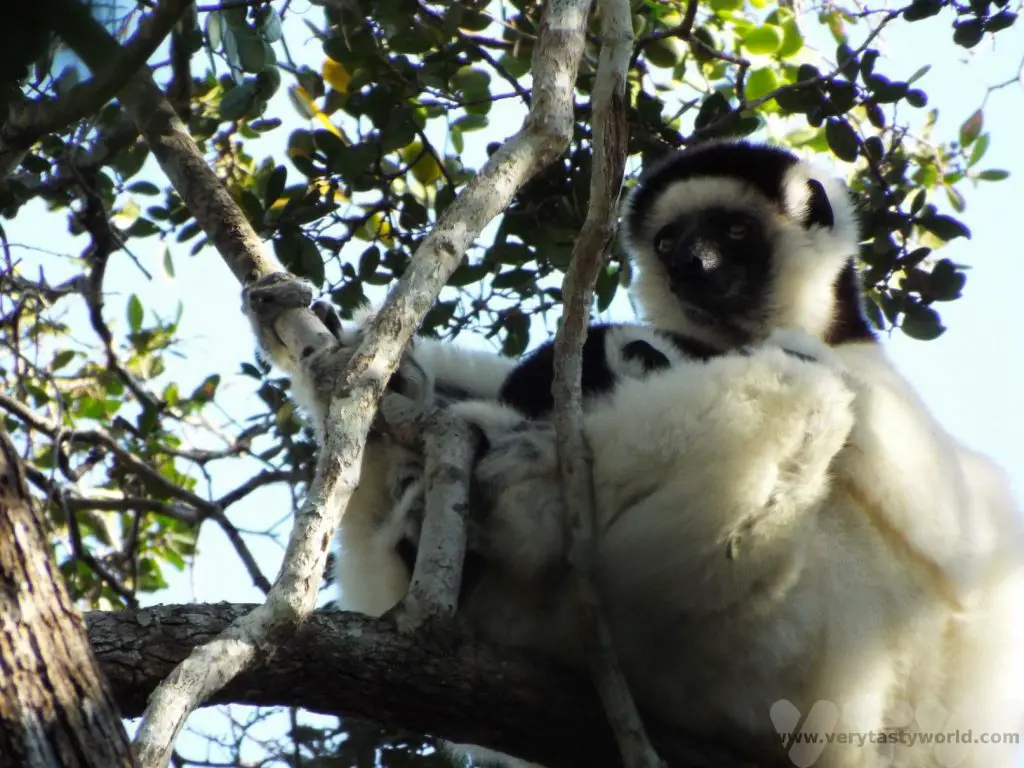
Travelling further along the RN7 as we approached Isalo the scenery changed from flat, extensive plains to a more rocky landscape. No visit to the area would be complete without visiting the Isalo window at sunset and our timing was just perfect. The window is a rock formation with a convenient hole that faces west, perfect for viewing the beautiful sunset. The window is just off RN7 and very easy to reach from the road.
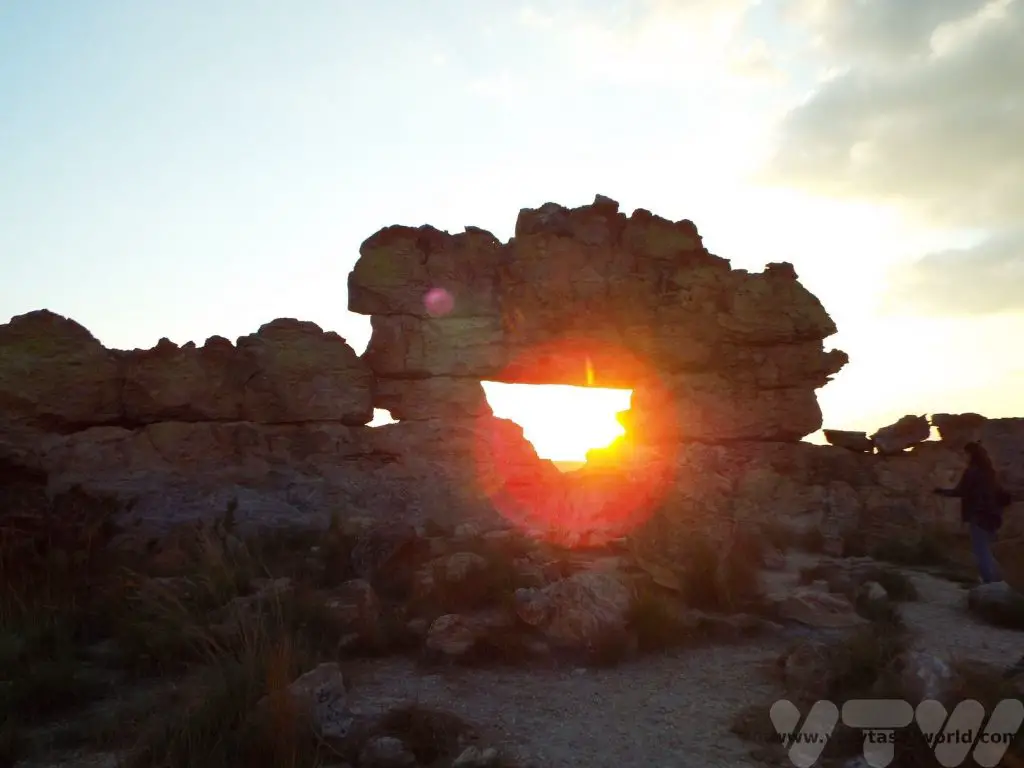
Isalo National Park
We spent the following day exploring Isalo national park. There are plenty of trails in the area, ranging from short hikes to a seven day trek. We chose the 14km trail. We met with our park ranger and drove to the start point.
The walk involved climbing up steps to view some dramatic ridges.
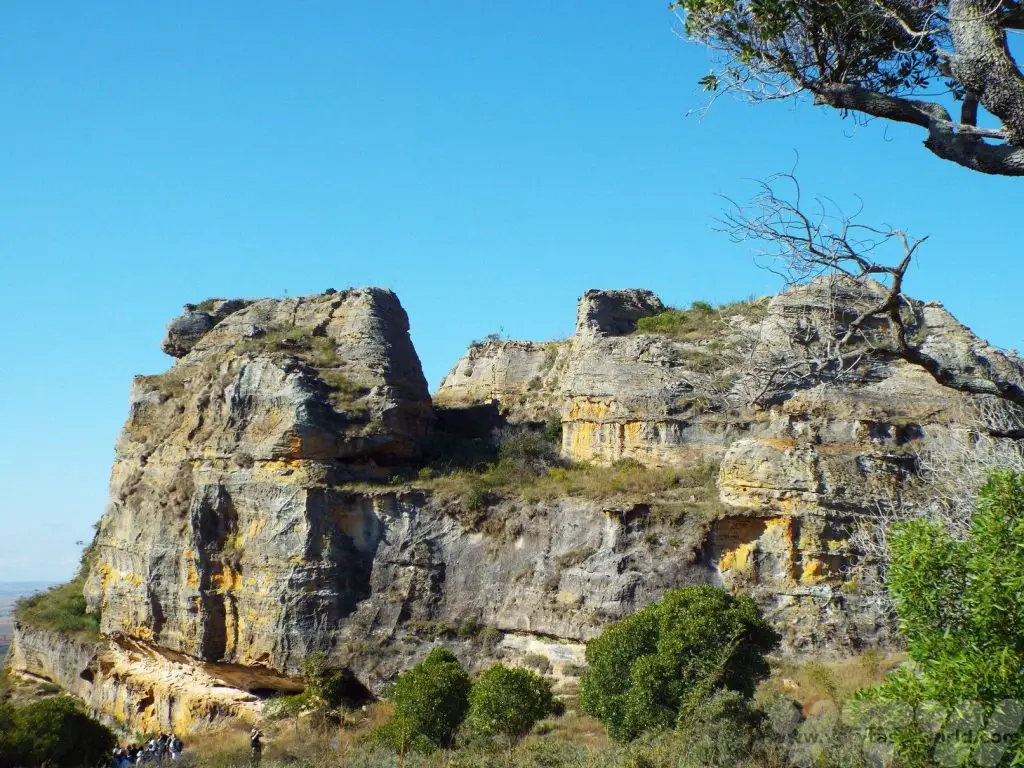
We saw tapia trees which had survived a catastrophic forest fire in the area. The views from the ridge were magnificent.
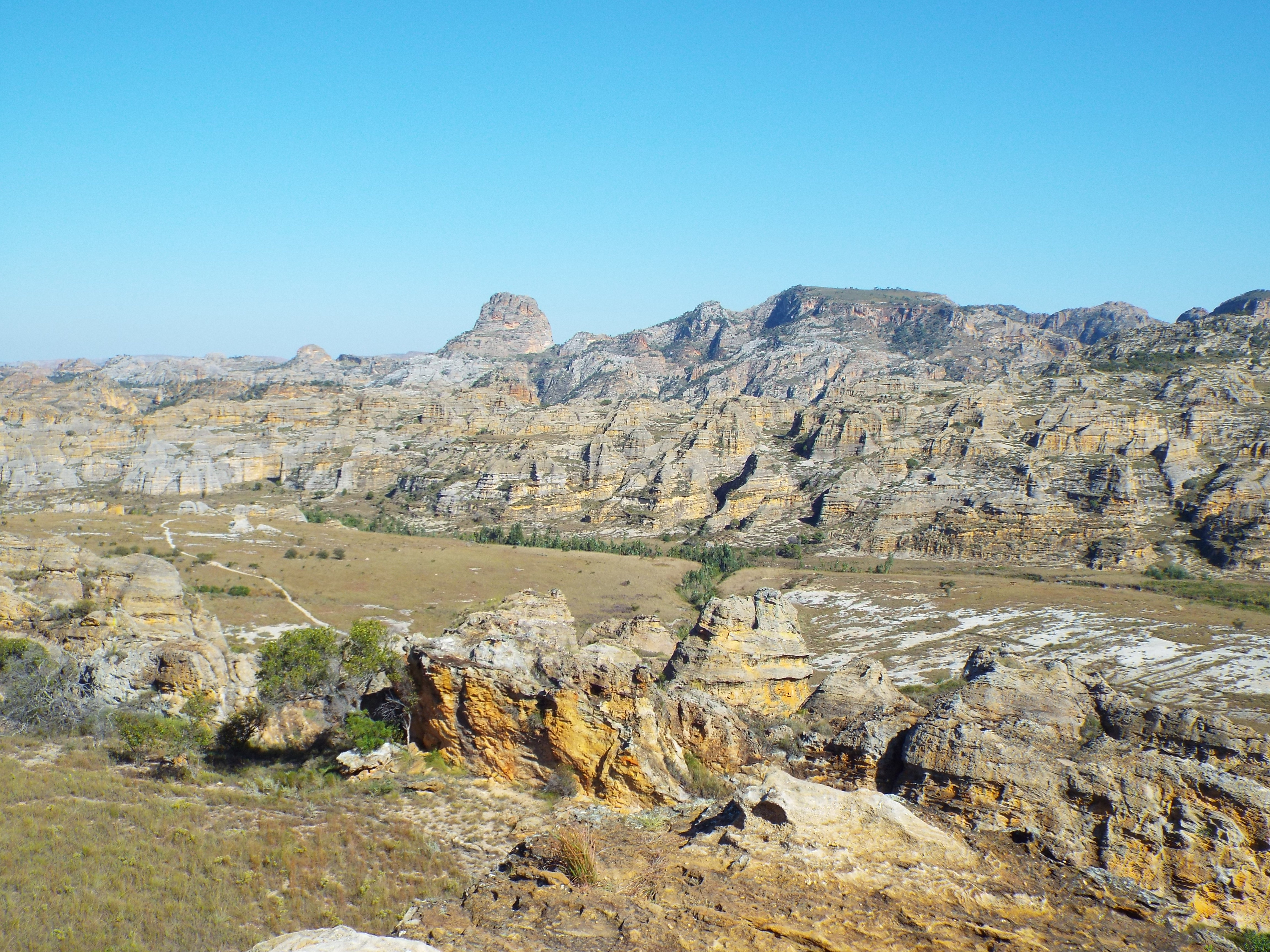
A walk along the relatively flat ridge led to a small waterfall with a pool where it was possible to enjoy a quick swim.
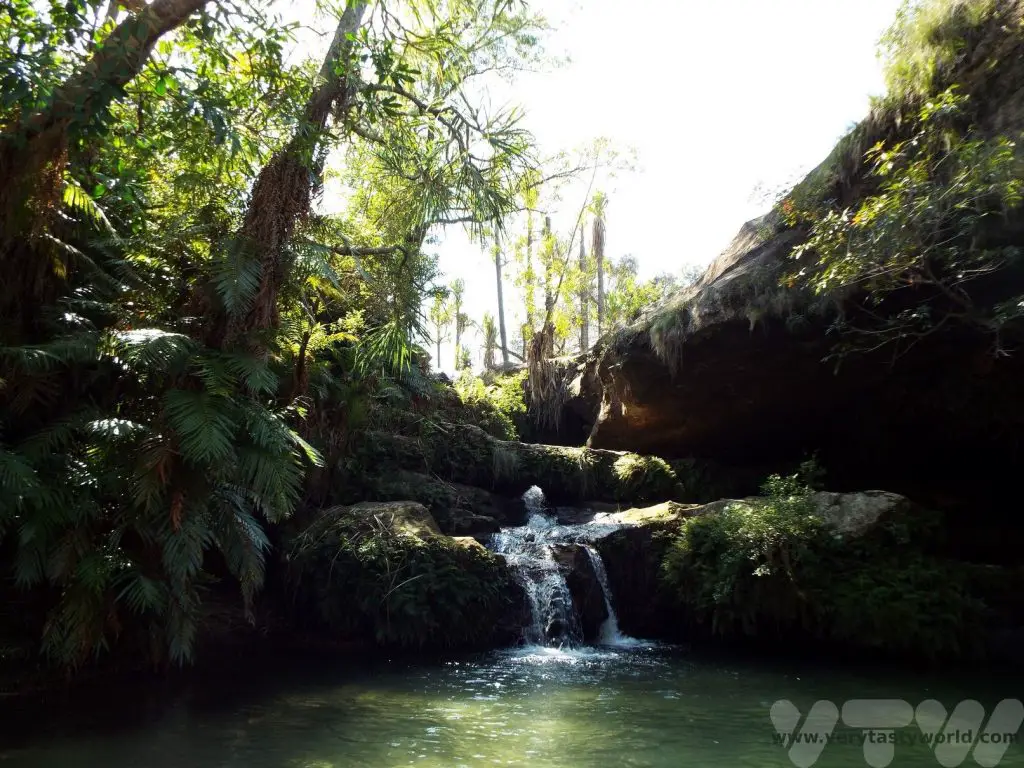
After a very pleasant dip in the pool, we walked along another flat section before climbing down the ridges. At the bottom, by the river, we discovered some white sifaka lemurs and ring-tailed lemurs.
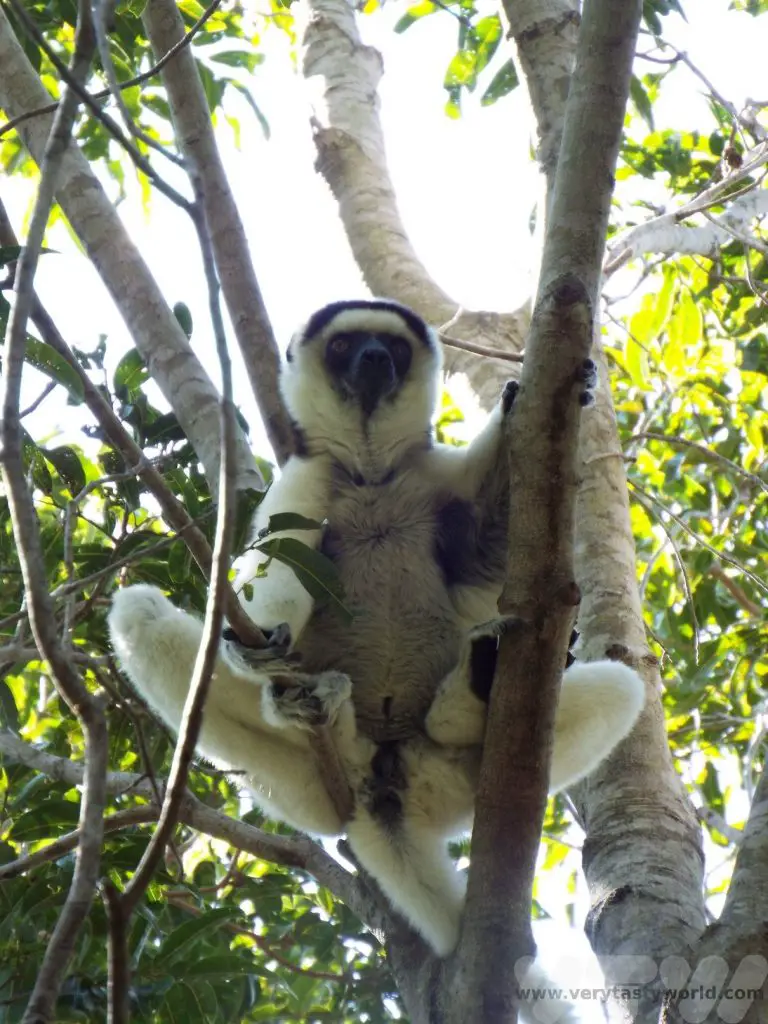
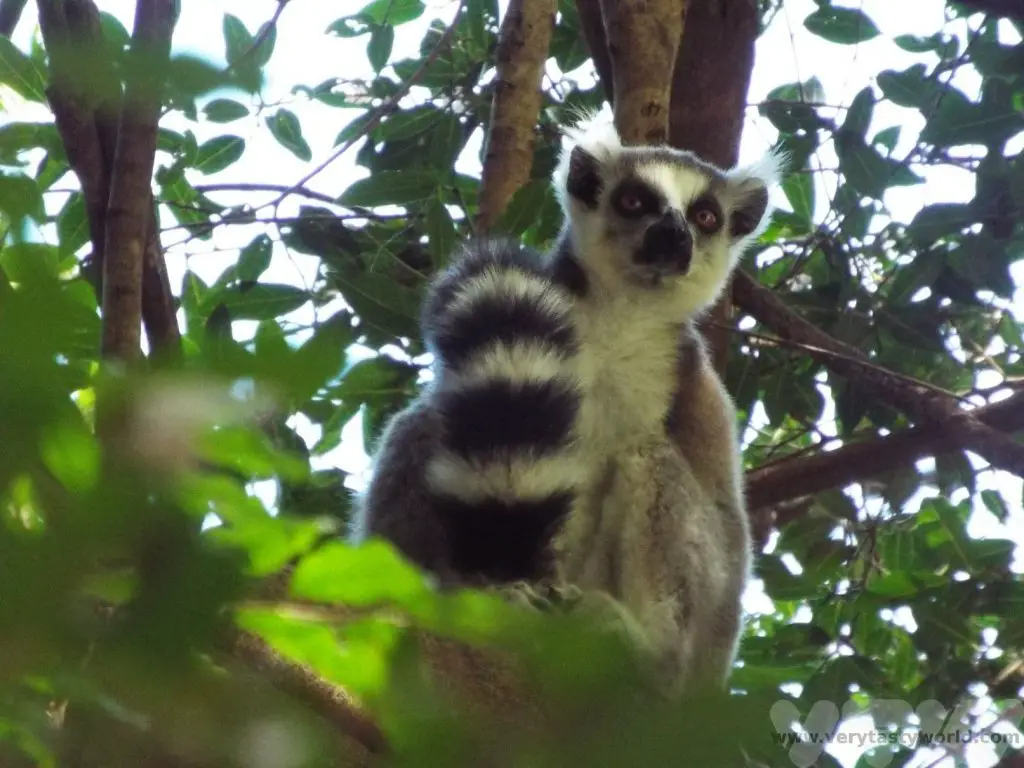
One of the most wonderful things about Madagascar is the night sky. Don’t forget to look up at night. It is possible to see the most brilliant views of the Milky Way. If you’re from the northern hemisphere, the stars are very different. The photo below was taken with a cheap phone camera. We would never have been able to capture these stars in the light-polluted skies at home.
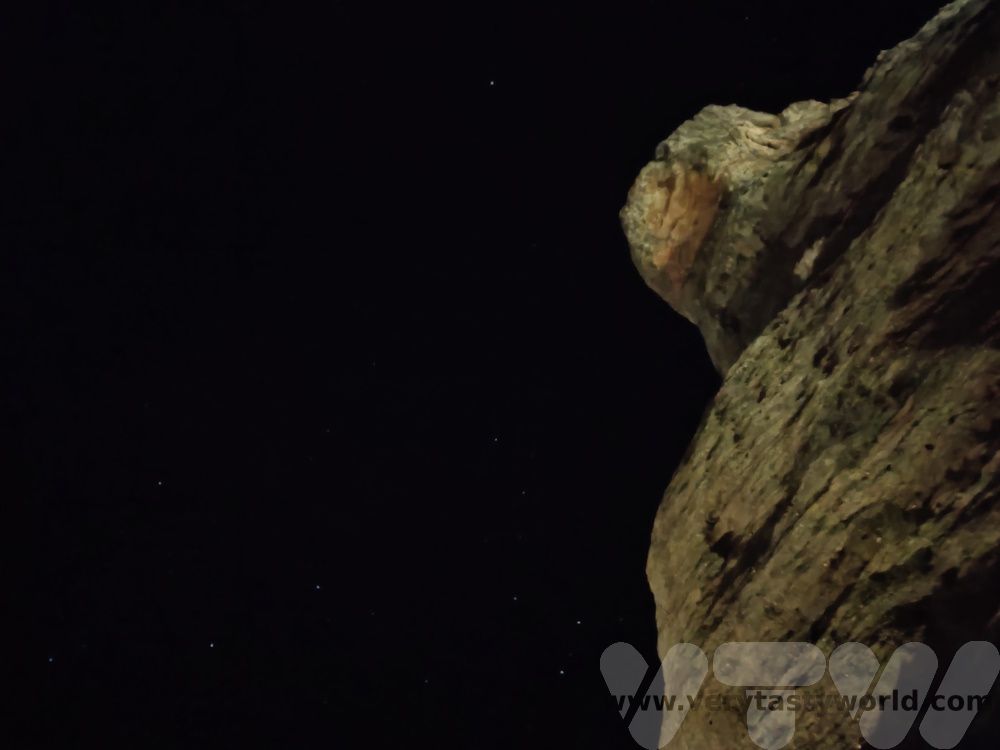
Isalo to Andringitra
210km (~2 hours on RN7 then ~1 hour for 20km on a very bumpy dirt road)
Another day on the road, we departed Isalo early in the morning. The RN7 has a landmark by the side of the road, a rock called the Lady Queen of Isalo. It is so distinctive that it appears on the 1000 Ariary banknote.
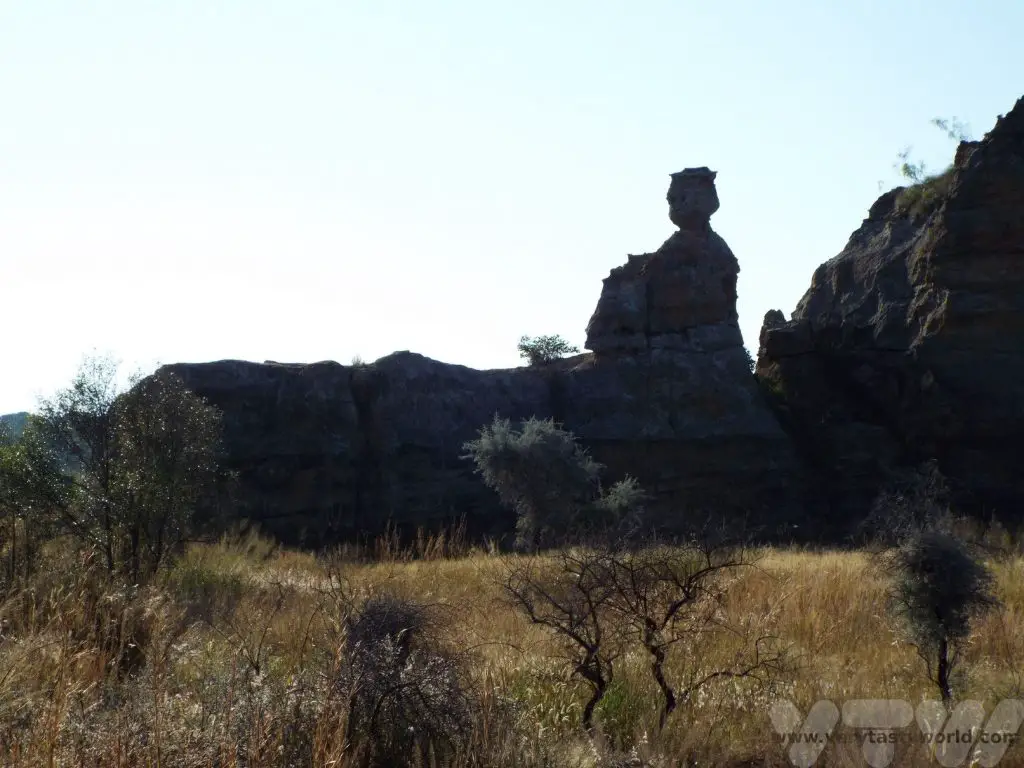
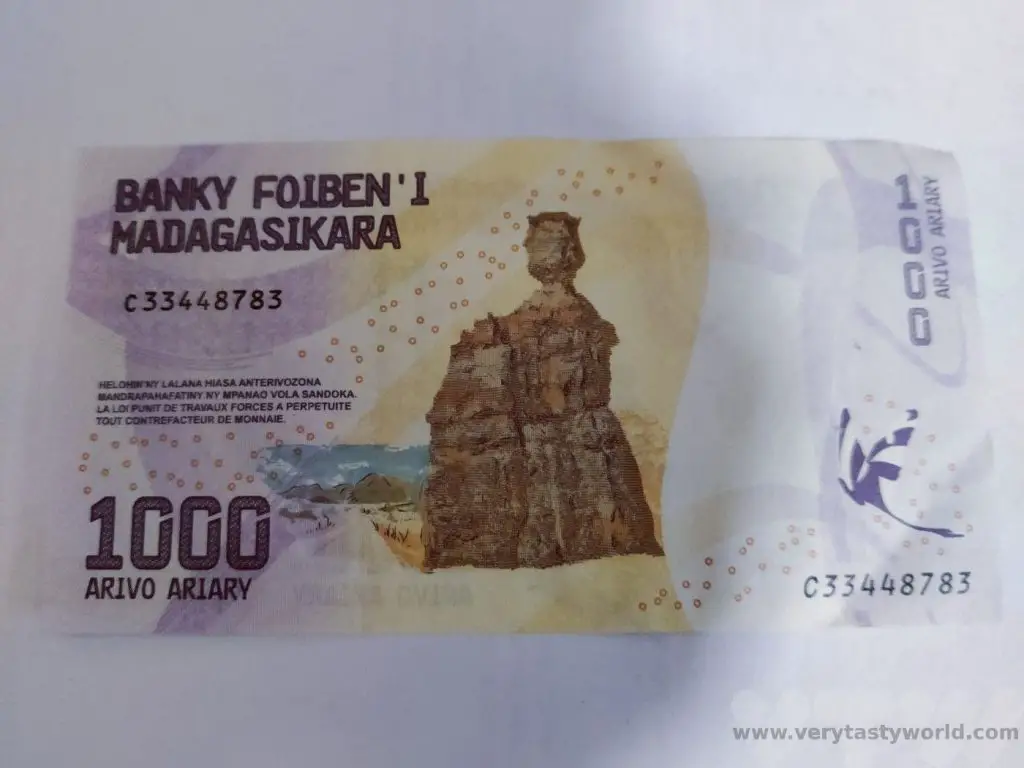
Andringitra
A little out of the way but definitely worth enjoying/enduring a ‘Madagascar massage’ along the extremely bumpy, rumbly dirt track, this area of outstanding beauty is a climbers’ paradise. Many professionals come to the area to climb the dramatic granite rock faces.
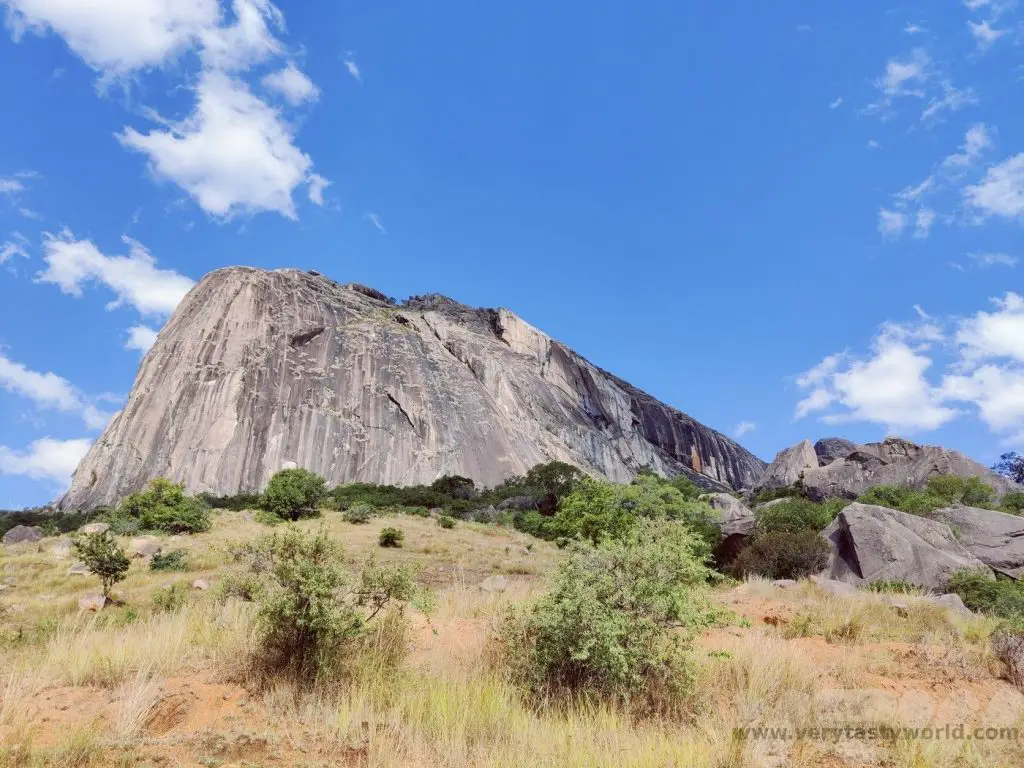
There are a couple of walks available for the less intrepid and we enjoyed both of these. A hike to the base of the ‘chameleon rock’ affords amazing views of the surrounding area when you reach the summit.
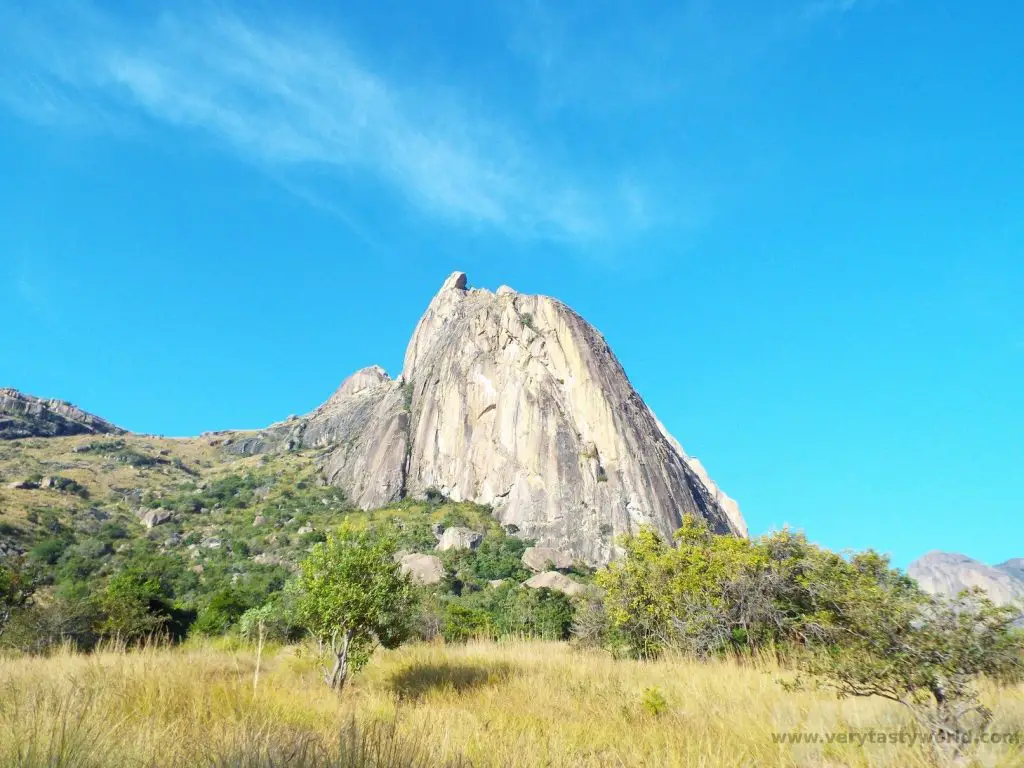
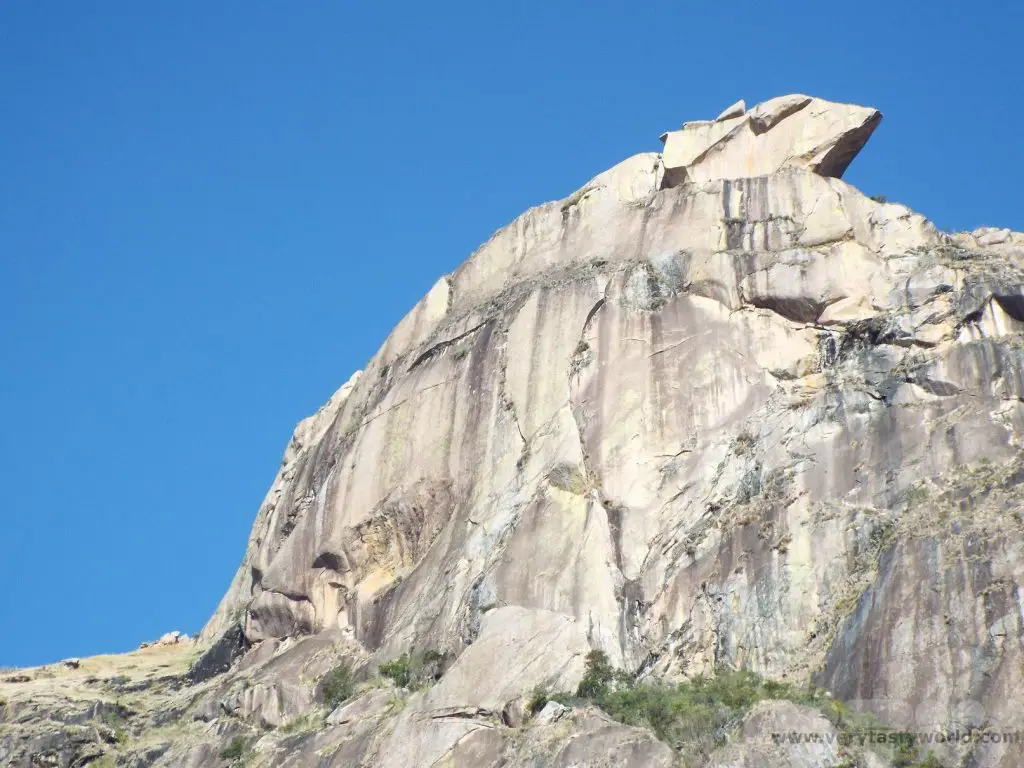
It’s about a 600m ascent and the view from the top of the ridge is spectacular.
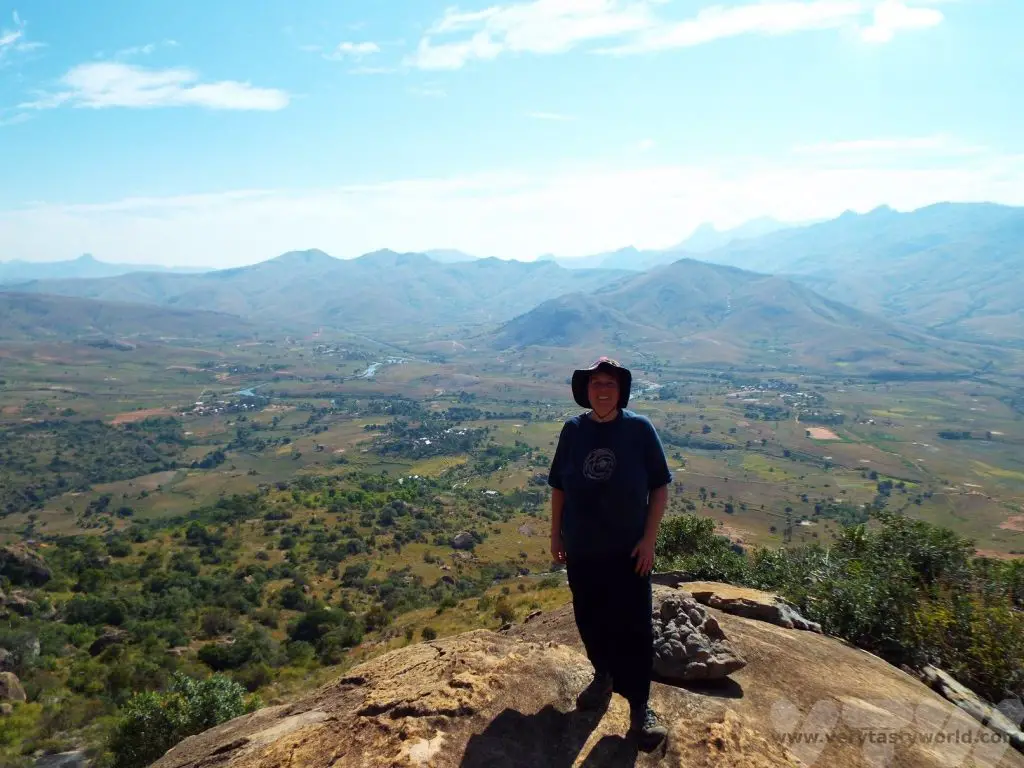
And there’s also a lovely easy stroll through the fields and paddy fields to a natural swimming pool…
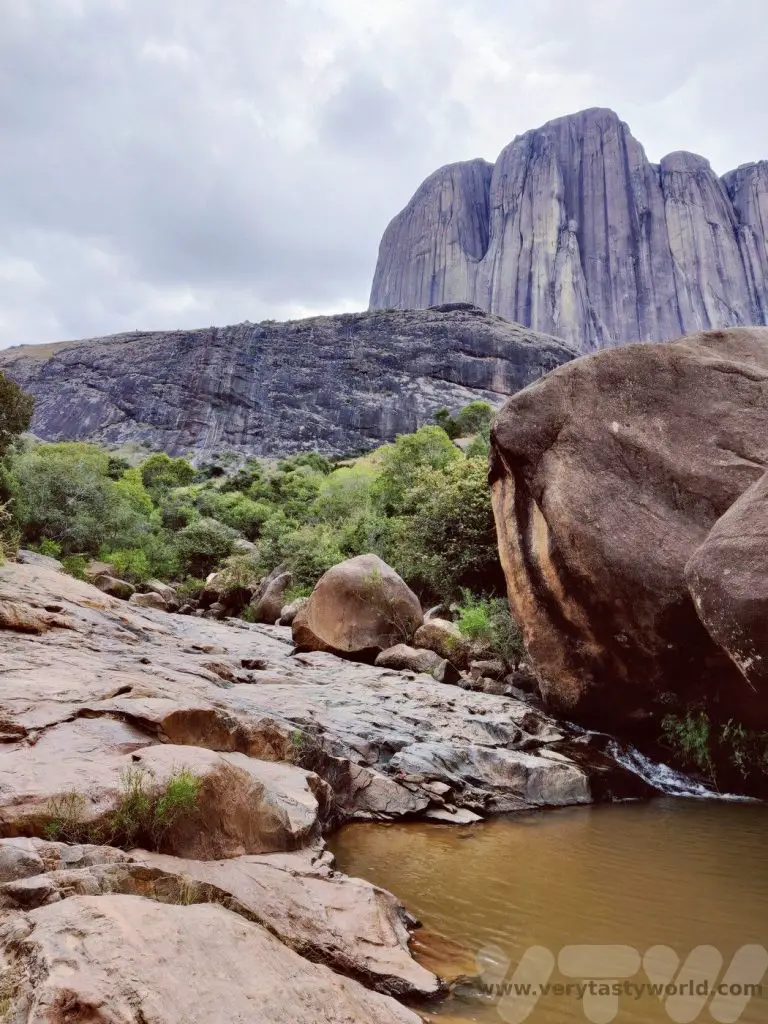
… and then through the forest, where you can see ring-tailed lemurs, and on to the local village. It was interesting to learn about the crops grown in the area and how the plants of the forest were used for medicinal and other practical purposes.
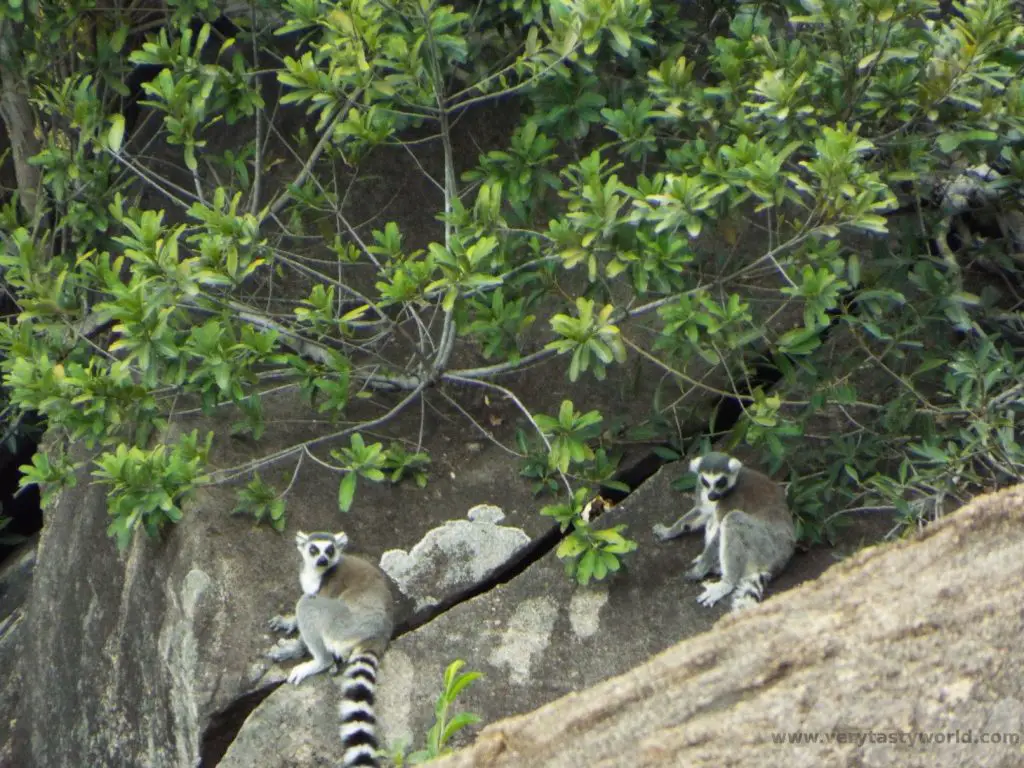
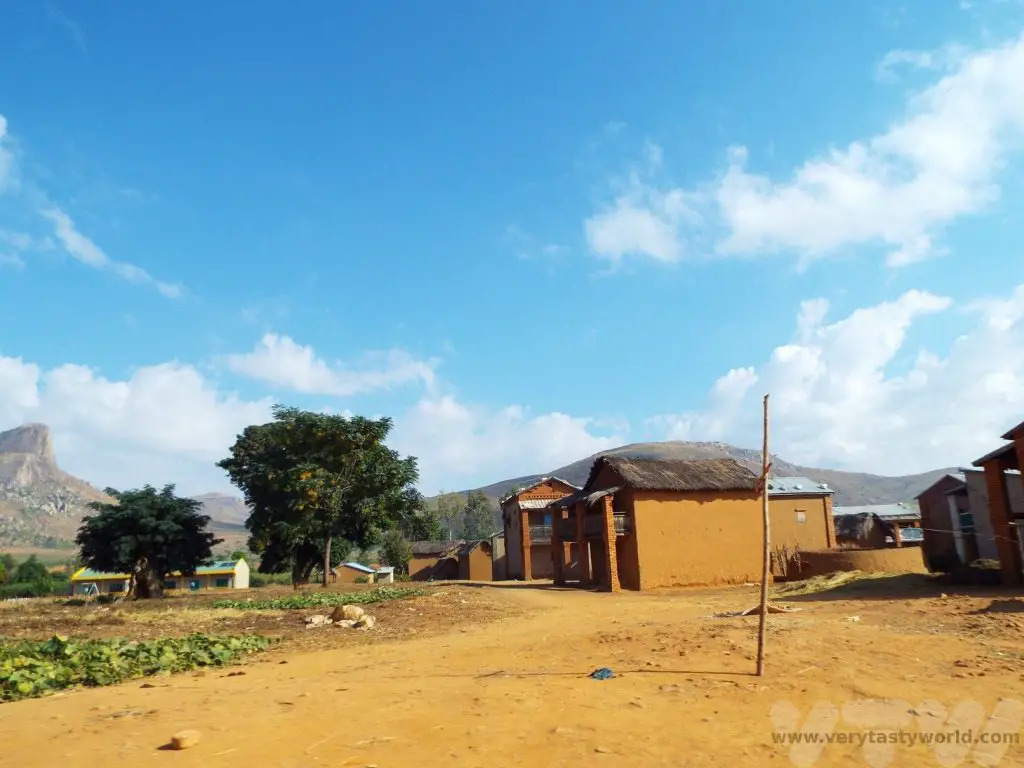
Andringitra to Ranomafana
350km (~5-6 hours)
This was another long drive day but we had a few stops on the way. The Anja Community Reserve, south of the district capital city of Ambalavao, is a community-run forest where local people were able to guide us and we could spot some of the local ring-tailed lemurs.
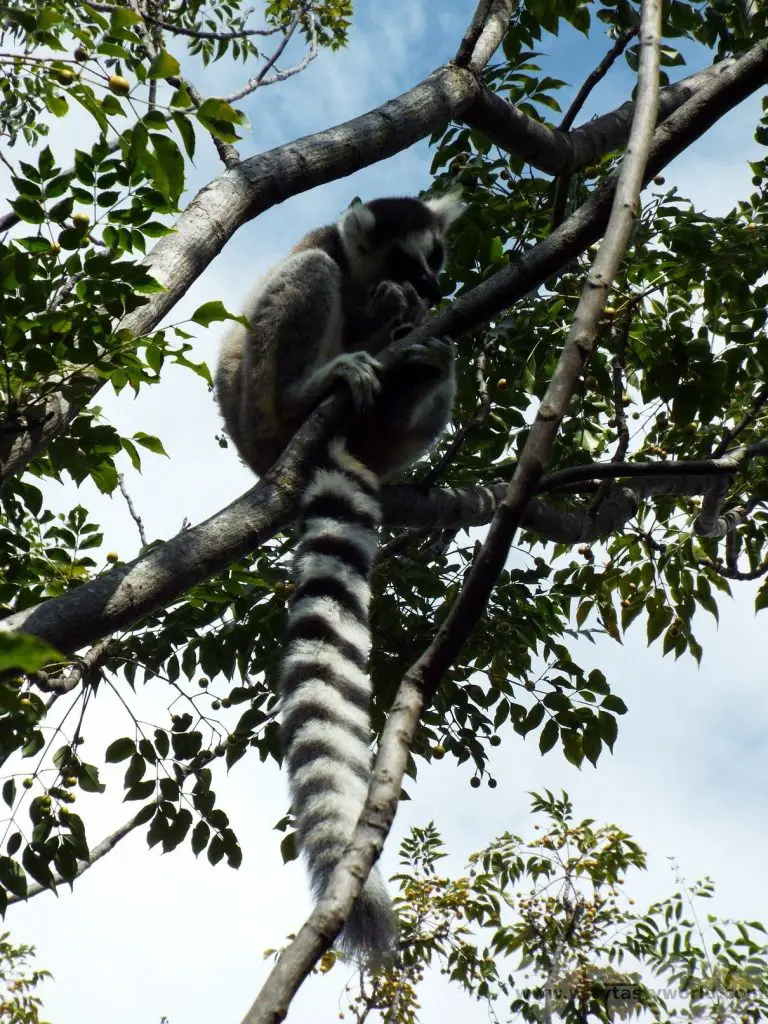
This would be the last place we would see the ring-tailed lemurs. Different species of lemur tend to live in specific parts of Madagascar. The ring-tailed lemurs have 14 black stripes and 14 white on their tails. They are fascinating to watch – lively and agile as they leap through the trees.
After a short drive to Ambalavao, the major city in the area, we arrived on zebu market day. Zebu are the livestock of the Bara tribe. They are cattle which have a distinctive hump, related to the species farmed by the Maasai in Kenya and Tanzania. Zebu is a common meat eaten in Madagascar and the hump is considered to be a delicacy. People travel from miles around to buy zebu at the market. The bull in the picture on the right (below) was worth about 2.5million Arairy (about $500 US).
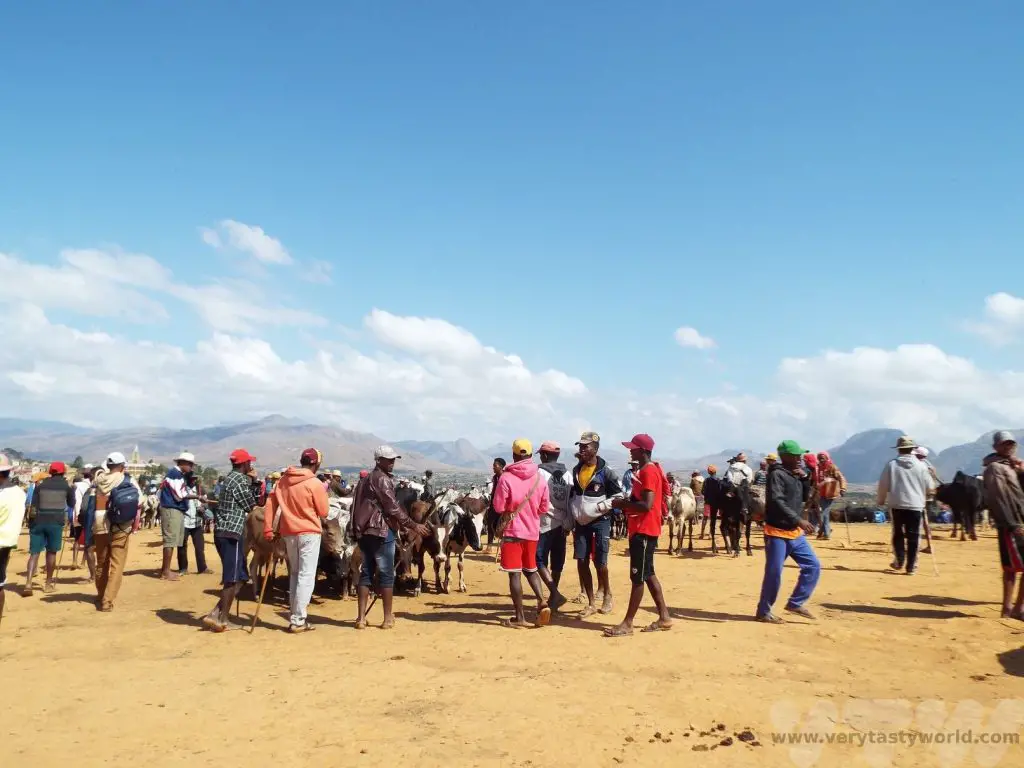
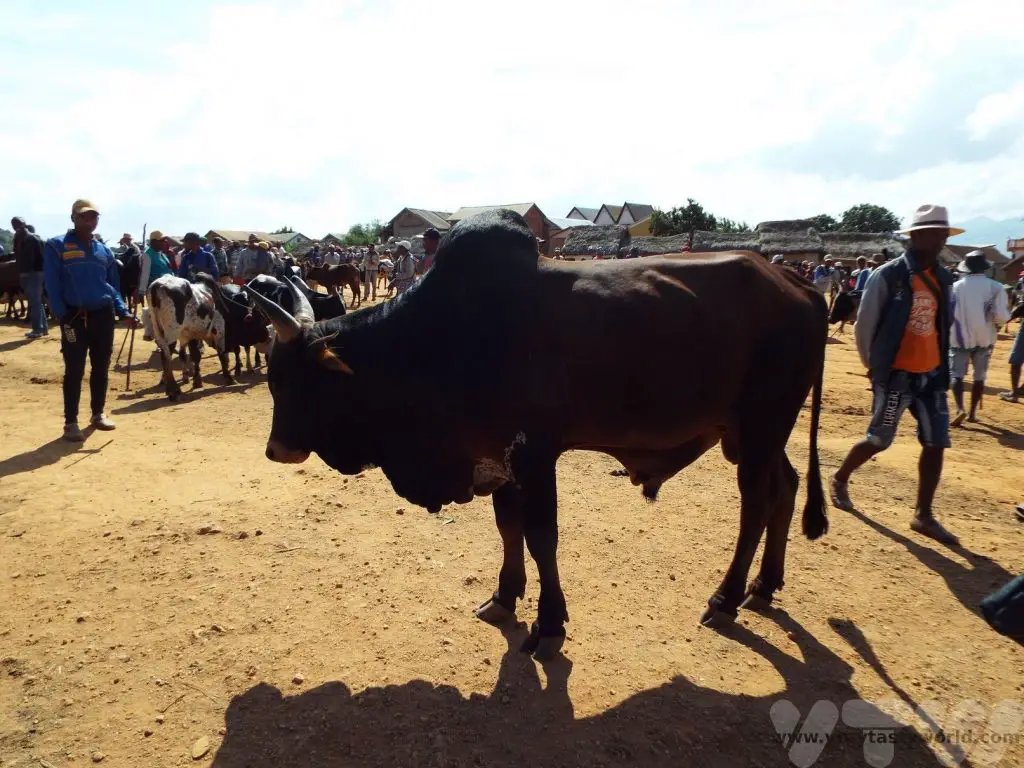
We also visited a paper-making facility of the Antemoro people. It’s very pretty flower-embedded paper.
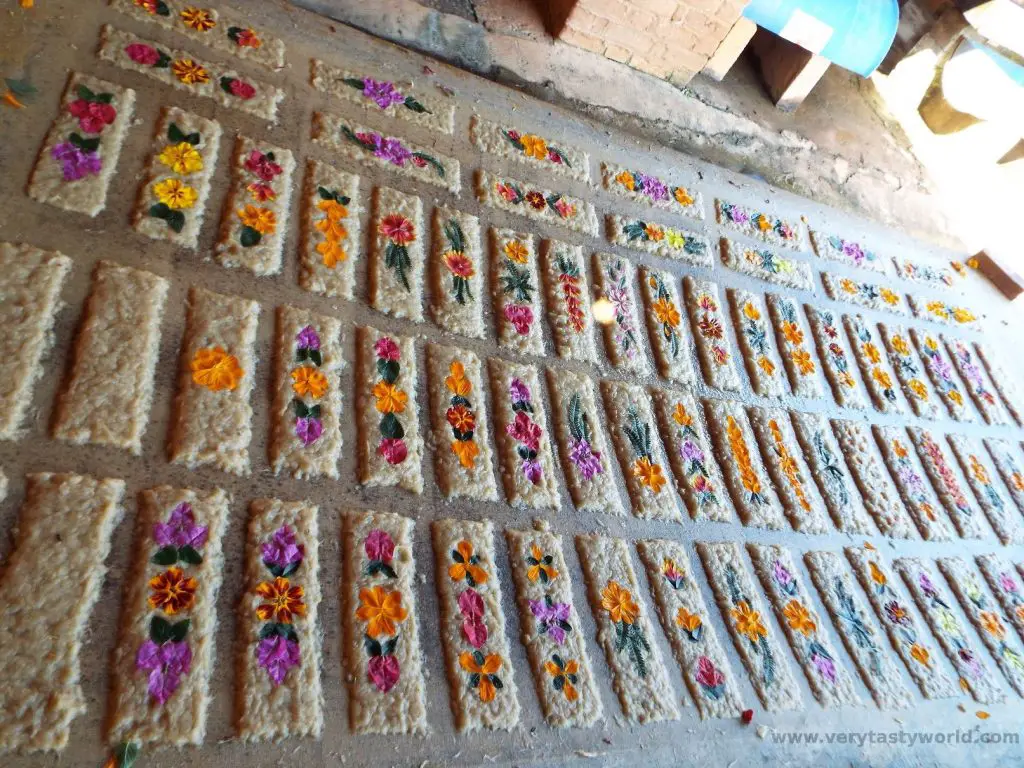
Ranomafana National Park
The deciduous rainforest of Ranomafana marked another transition in geography.
It was dark when we arrived at Ranomafana but we had a night walk planned. Walking along the road (you are no longer allowed to walk inside the rainforest because it is really dark and people have fallen over tree roots in the past) it is possible to spot many different creatures, including chameleons (which don’t change colour at night), frogs and, if you are lucky, the shy nocturnal mouse lemur, the smallest of all the lemurs. (We didn’t get lucky here but we did later in our trip.) The chameleons were fascinating.
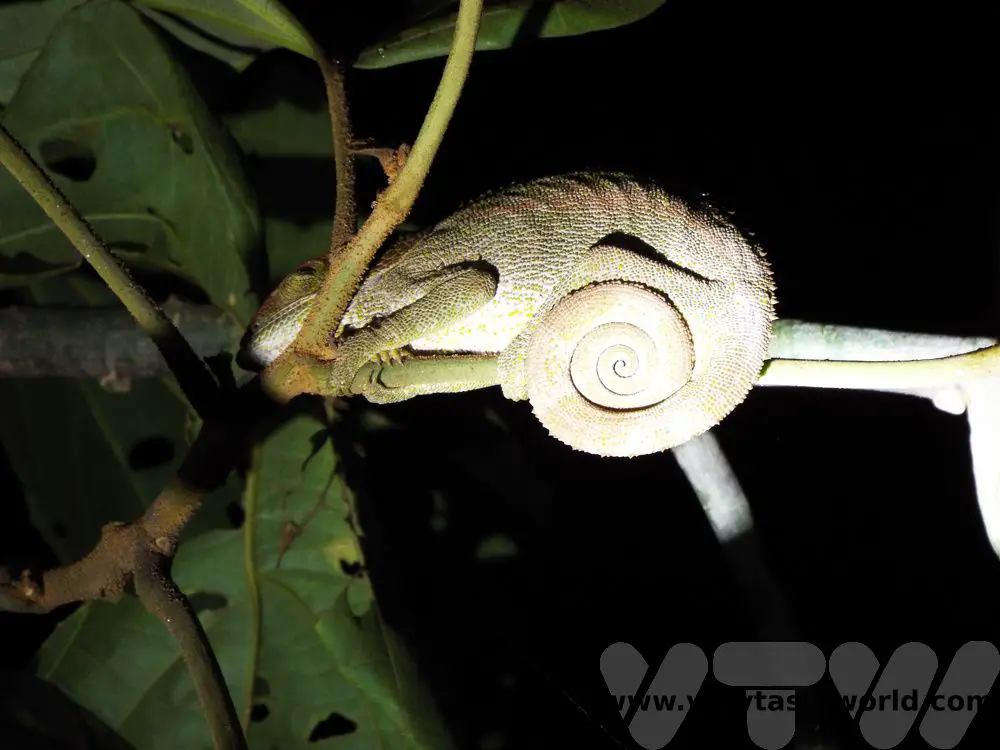
The blue-legged chameleon was particularly colourful.
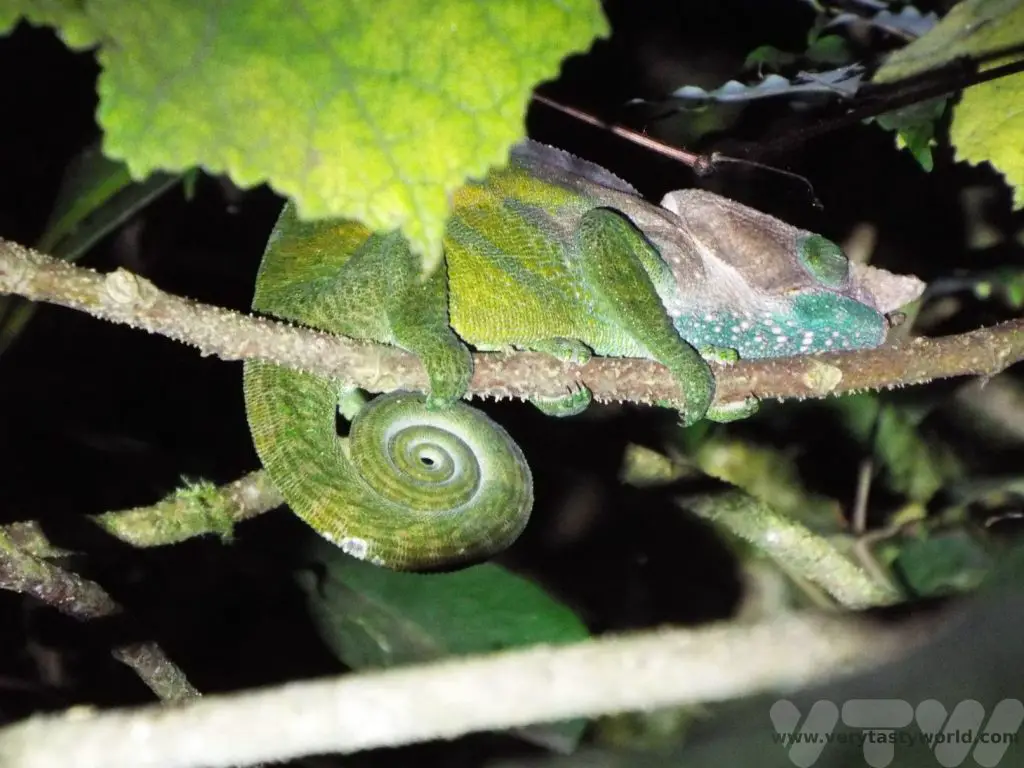
The following day we visited the rainforest. The Ranomafana forest is huge, covering more than 41,600 hectares (161 square miles). It was established as a national park in 1991 and has a research centre. Scientists travel from all over the world to discover and learn about its flora and fauna.
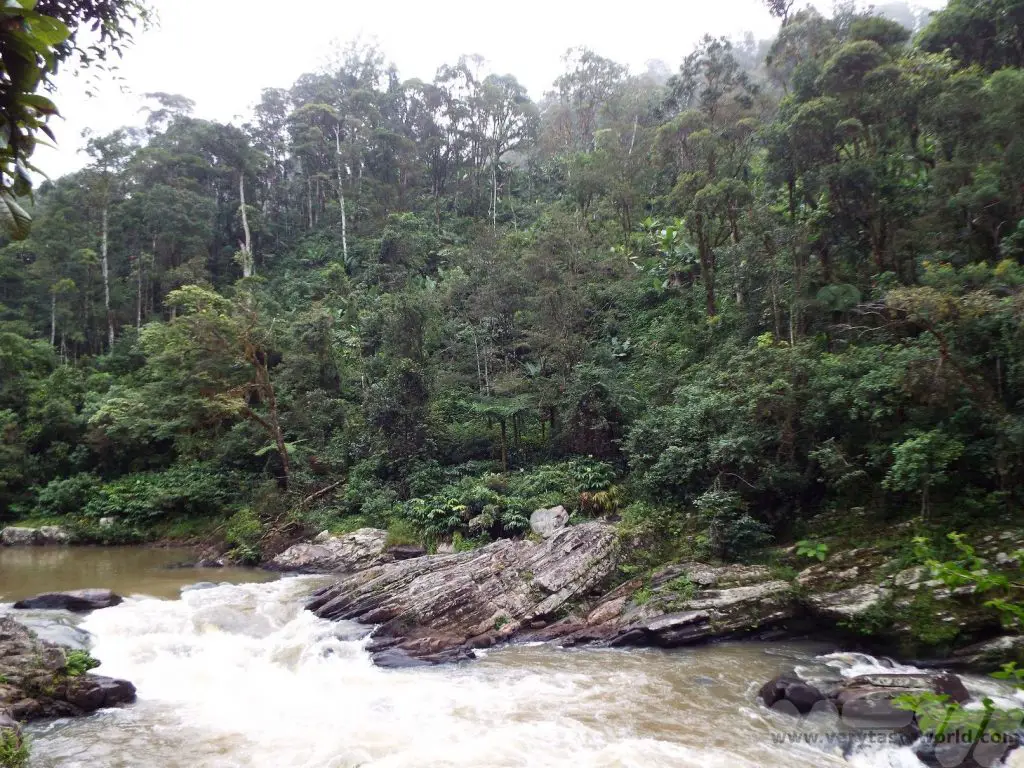
It has seven diurnal species of lemur and four nocturnal. With our excellent guide, Chantal, aided by expert spotters, we were able to see four species of lemur, including the critically endangered greater bamboo lemur.
We also saw the golden bamboo lemur.
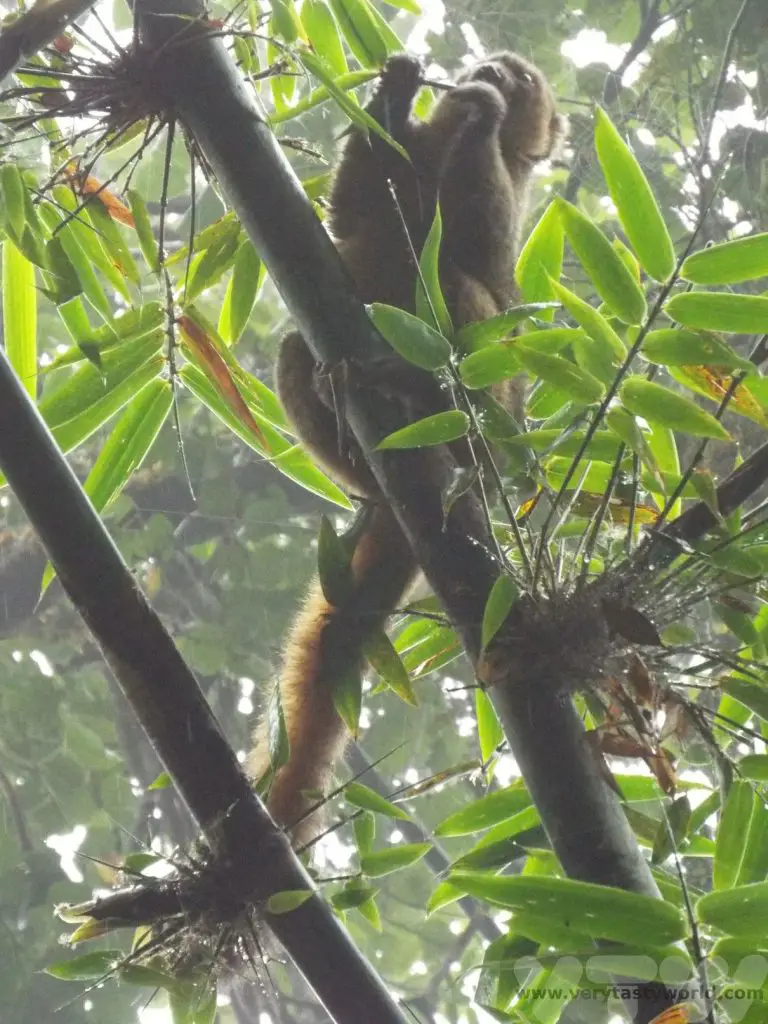
Red-fronted brown lemurs have incredibly expressive faces.
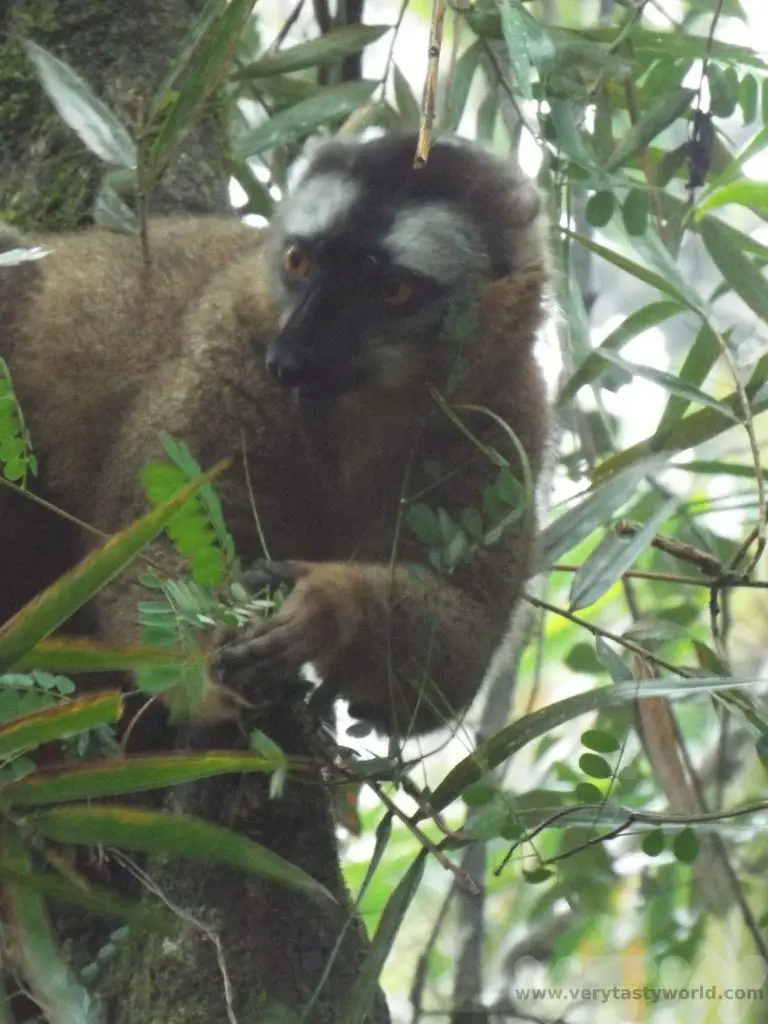
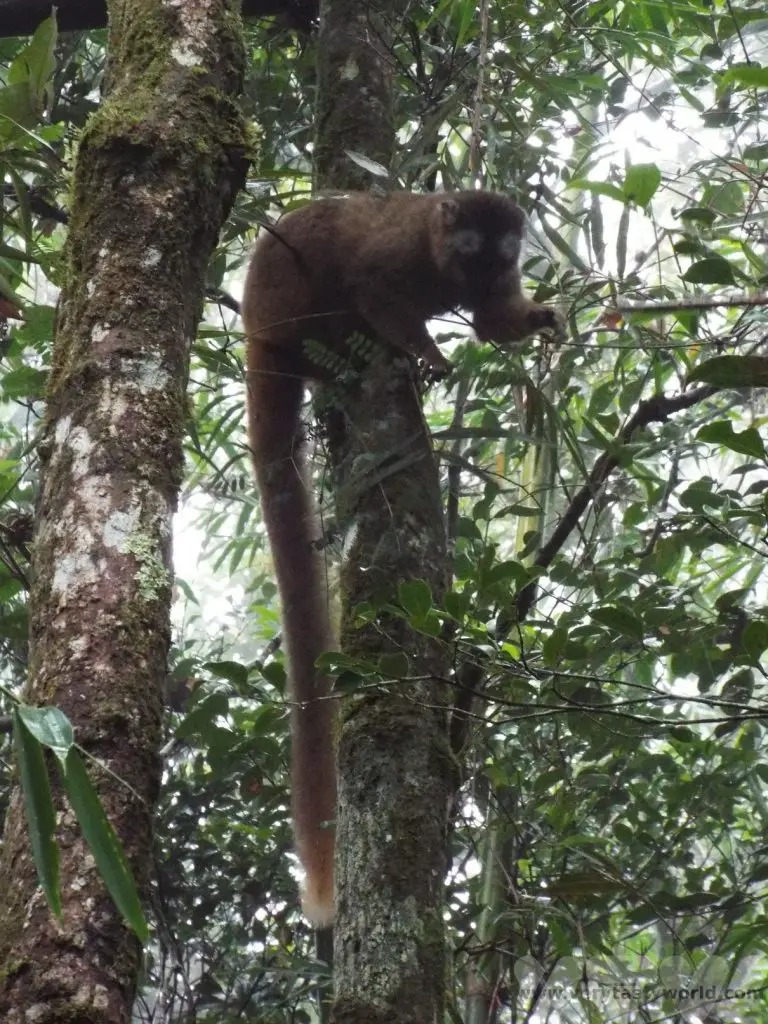
The red bellied lemurs were wonderful to watch, leaping through the trees.
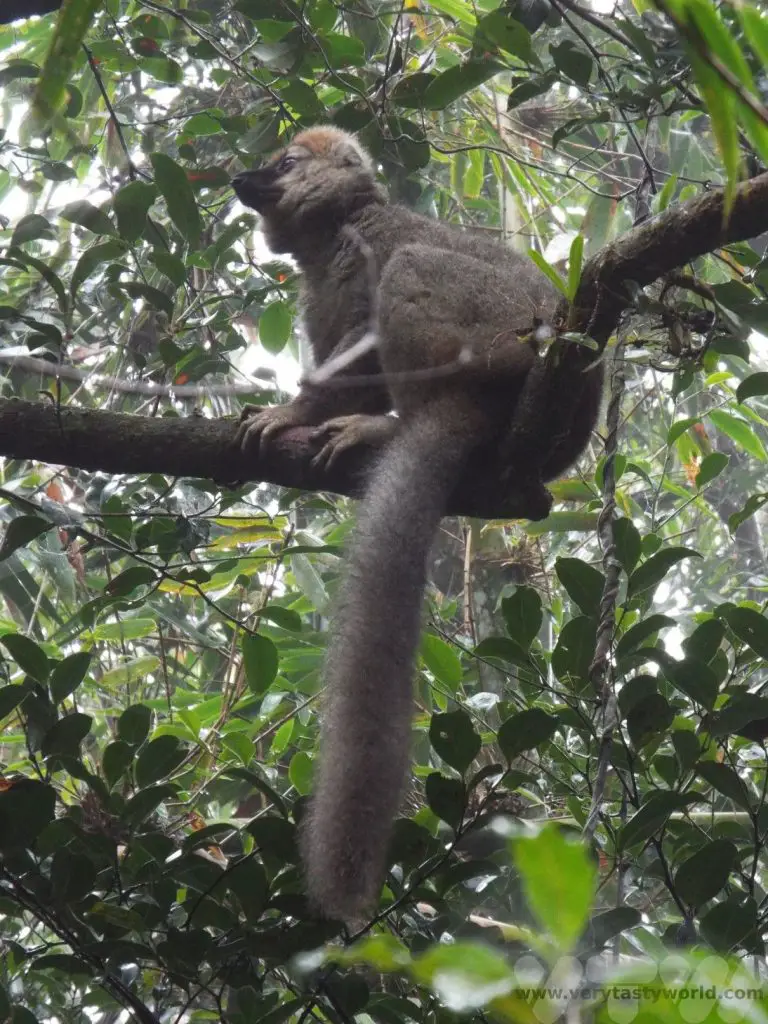
Another creature that totally befuddled us was the brilliantly named satanic leaf-tailed gecko. Our spotter told us there was a gecko on a tree – could we see it? The answer, despite looking really carefully, was an emphatic “no, but there is a dead leaf.” We had to move around the tree to get a picture that actually looked like a gecko.
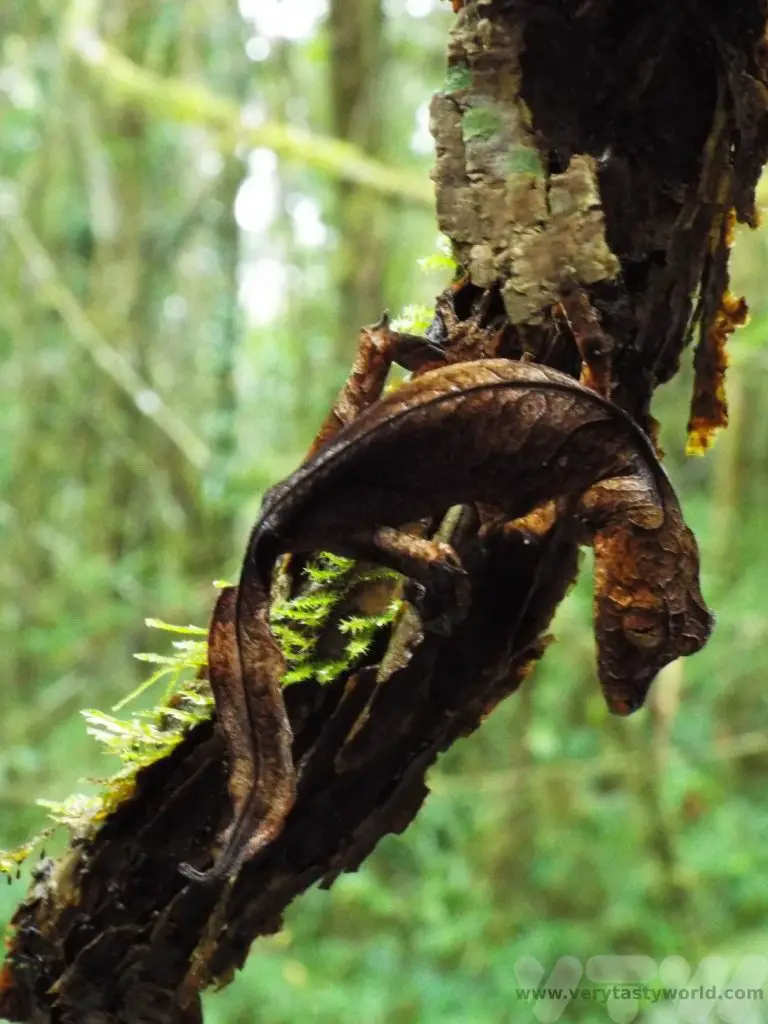
In the afternoon we visited a local vanilla plantation. Vanilla is not indigenous to Madagascar but originated in Mexico. However it is widely acknowledged by many chefs that Madagascan vanilla is amongst the best in the world. A huge amount of work goes into producing this sought after spice. The plants are hand-pollinated because the bee that pollinates vanilla in Mexico doesn’t exist in Madagascar. The temperature and humidity are important factors in growing the plant.
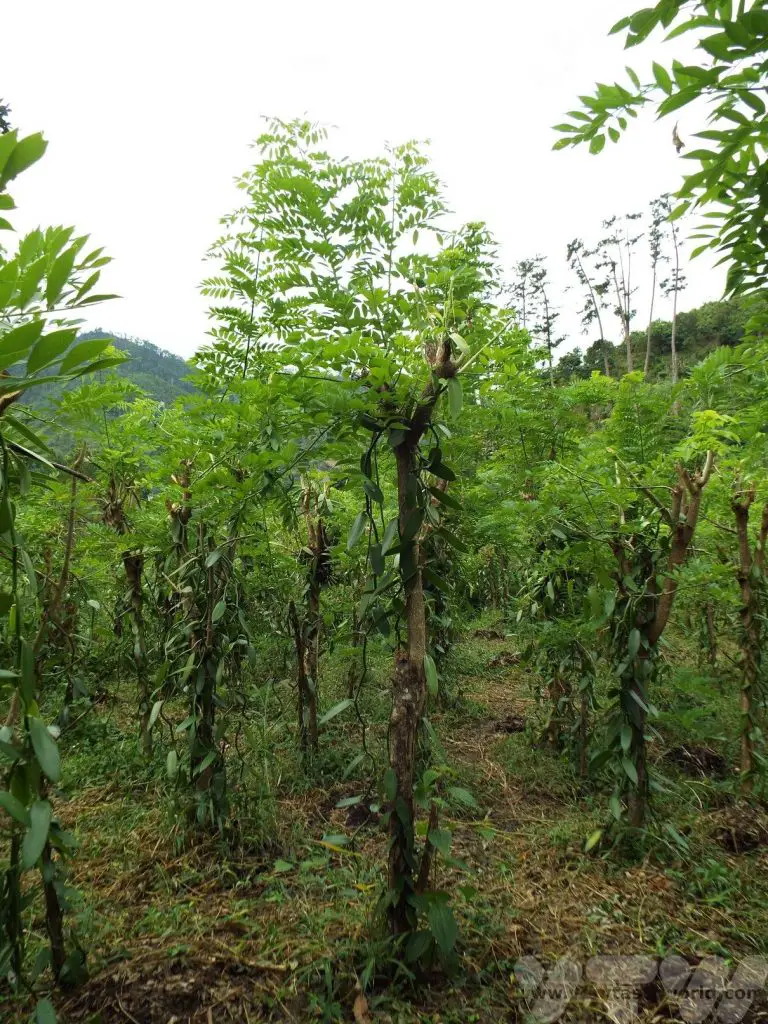
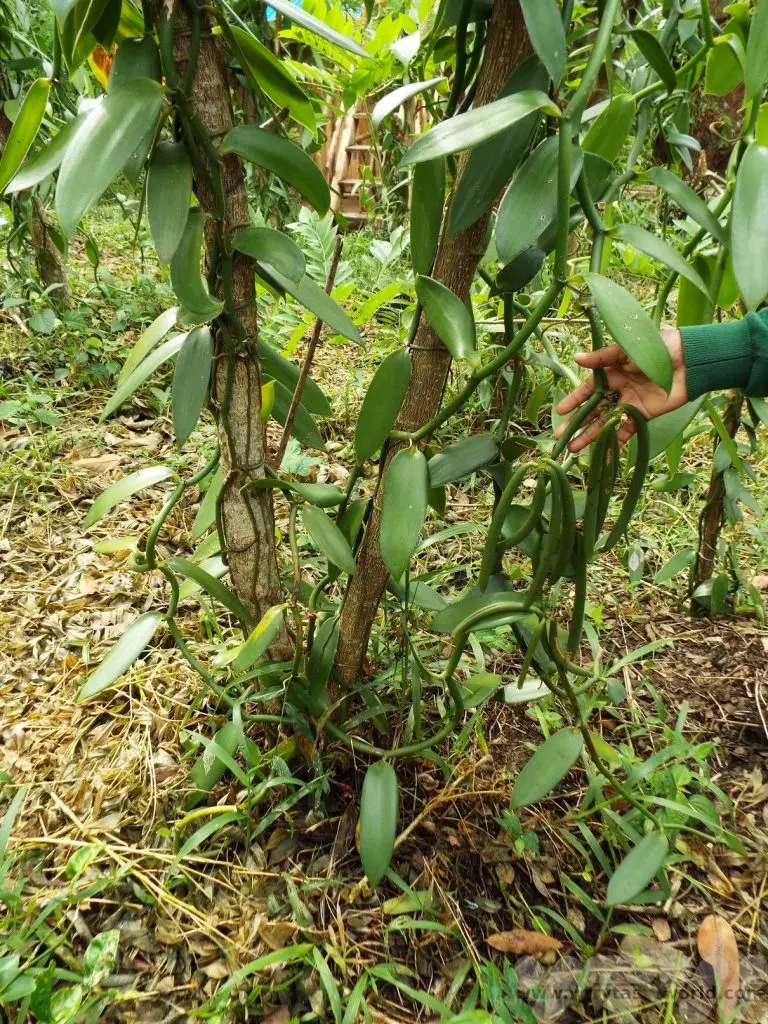
There are strict regulations on the production and harvesting of vanilla. Plants are marked so that each plant is assigned to its farmer and pods can only be harvested at a particular time of year. The Government monitors production. The pods are harvested then blanched in hot water for three minutes. They are then sun-dried over 10 days – the heat and humidity levels need to be just right.
We couldn’t visit and not buy some vanilla pods – and other spices such as cinnamon, wild pepper and wild ginger – to bring home as foodie souvenirs. We were advised to keep them in an airtight glass jar, although the pods apparently can also be frozen.
Ranomafana – Antsirabe
250km (~6-7 hours on bumpy road)
Another long drive day of driving with a couple of cultural stops.
We passed through the Betsileo region which is known for the wood carvings of the Zafimaniry people, acknowledged as a UNESCO Intangible Cultural Heritage.
The Zafimaniry community have a woodcraft heritage. Foresters and craftworkers have a highly skilled knowledge of the local wood and how to craft it. We visited a workshop where we could meet craftsmen who not only carved intricate and beautiful pieces from mahogany and rosewood, we also saw them make their own tools. Even to the extent of making the blade for a hand-pulled bandsaw.
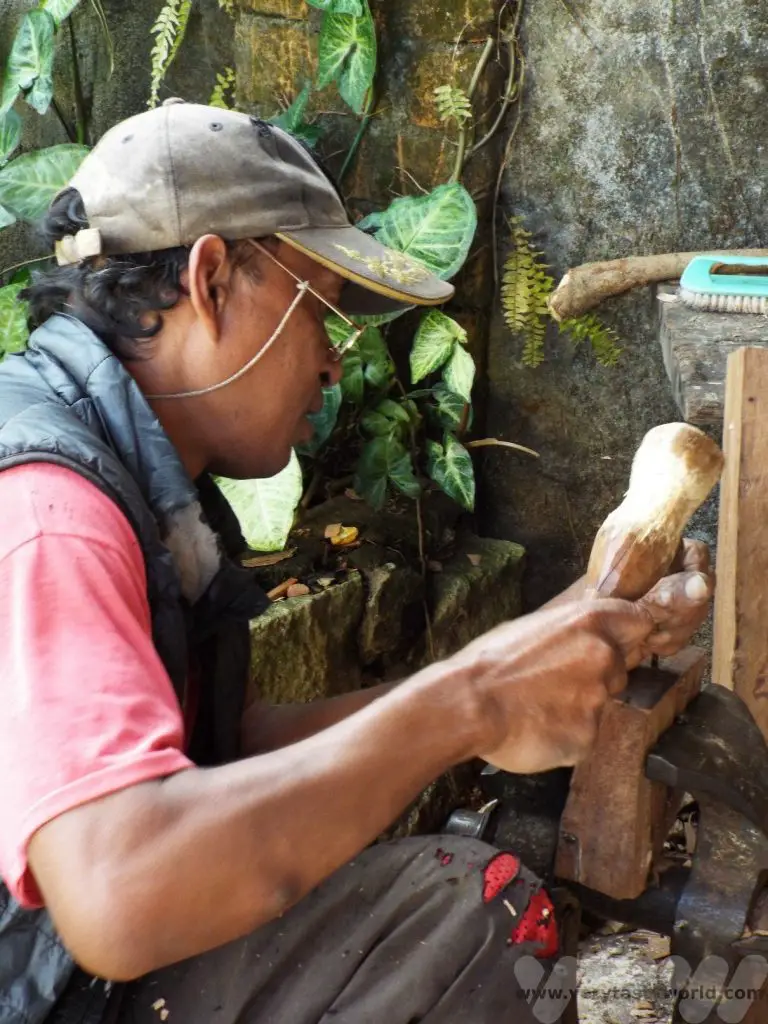
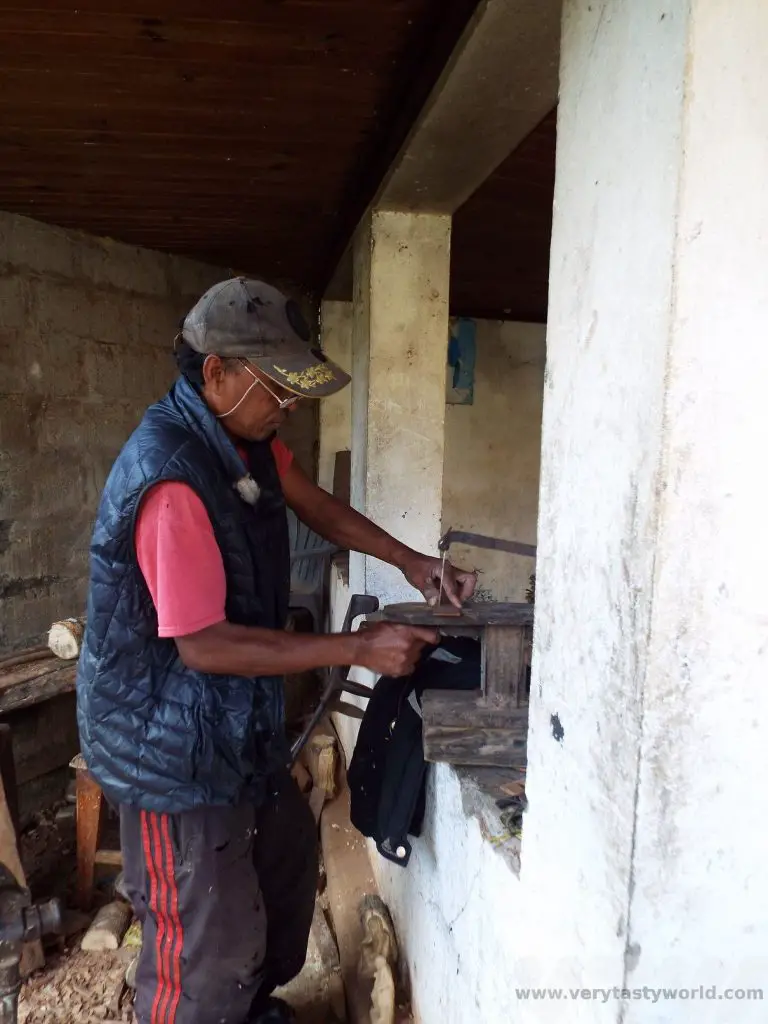
The quality of the products is exceptional. There is a large shop and, while we sometimes get a bit annoyed by visiting a small workshop followed by a big shop, we couldn’t resist buying a number of these top-quality pieces.
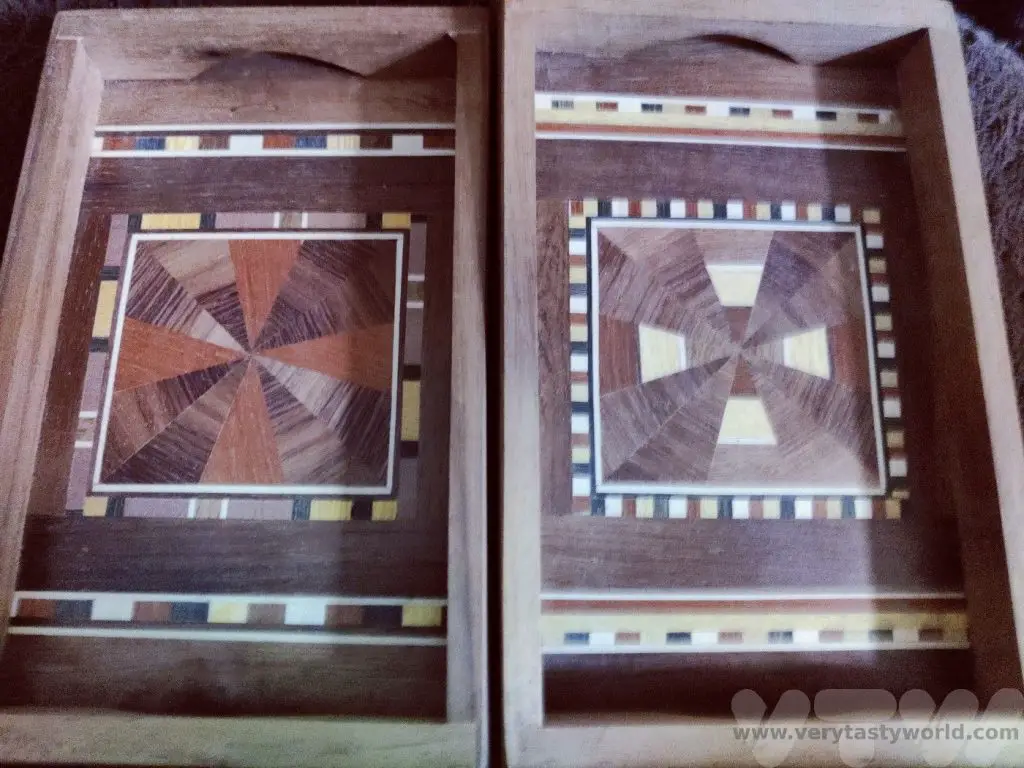
We also enjoyed a Malagasy lunch with traditional dance and music.
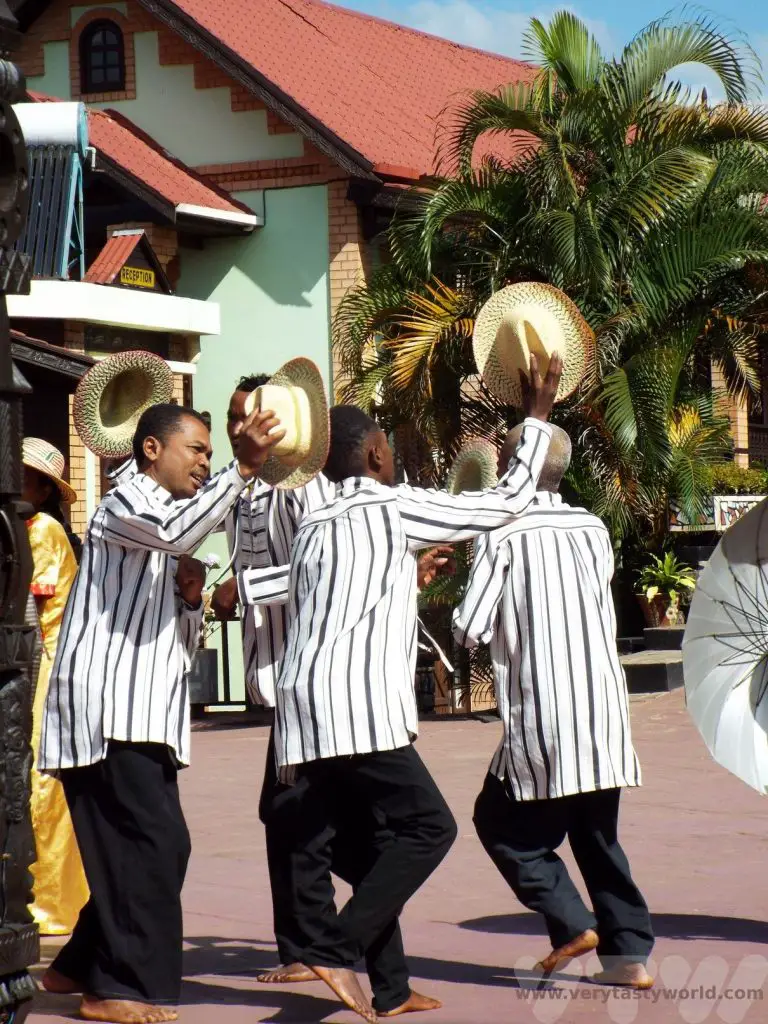
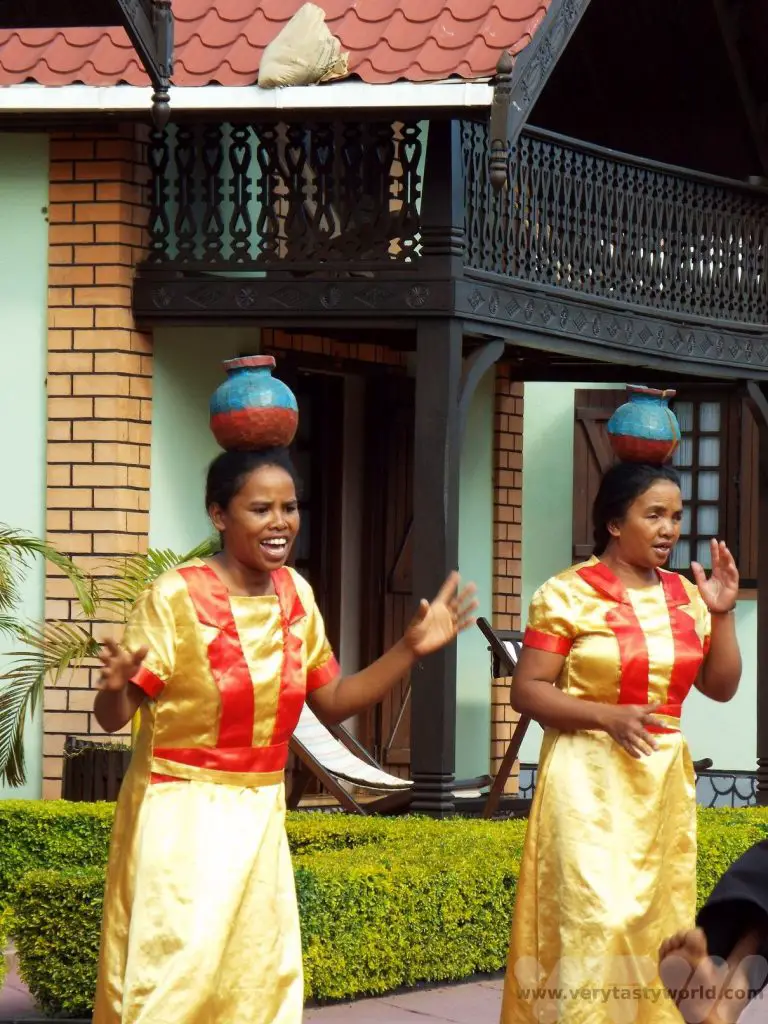
Rice is a staple in Madagascar. We saw paddy fields all over the country. The Betsileo are farmers and are one of the wealthiest tribes in the country due to their impressive cultivation techniques.
We enjoyed red and white rice with zebu steak, tilapia fish with chilli and ginger spices, beans and belly pork cooked with cassava leaves.
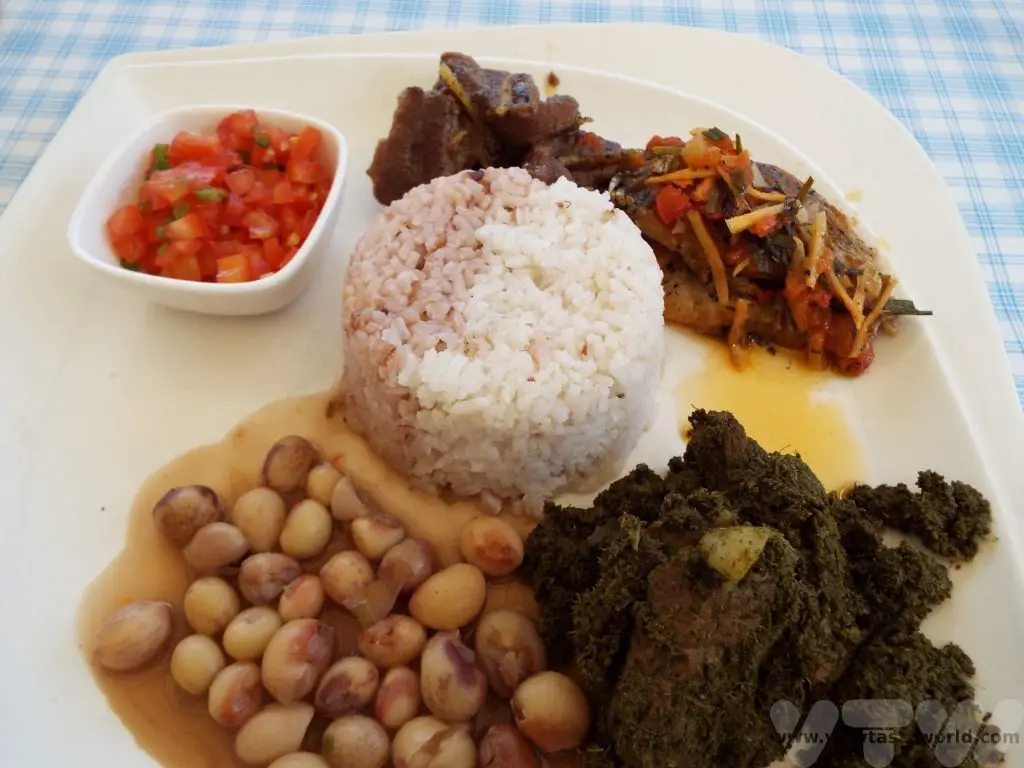
Antsirabe – Antanananviro
150km (4-5 hours drive)
Antsirabe is the third largest city in Madagascar and is an important commercial centre. It’s also home to the brewery which makes the national brew Three Horses Beer or THB as it is affectionately known. It’s a light, refreshing pilsner and we enjoyed it many times during our trip.
We had a long drive ahead so only had a short time to explore Antsirabe. We visited a famous precious stones facility and learned about the minerals that can be found in Madagascar. It is famous for its sapphires. We bought a lovely piece of crystalline, a stone that can only be found in this country.
We also visited Independence Square, a long avenue which contains a park. It commemorates Madagascar’s independence from French colonialism. The monument represents every tribe within the country.
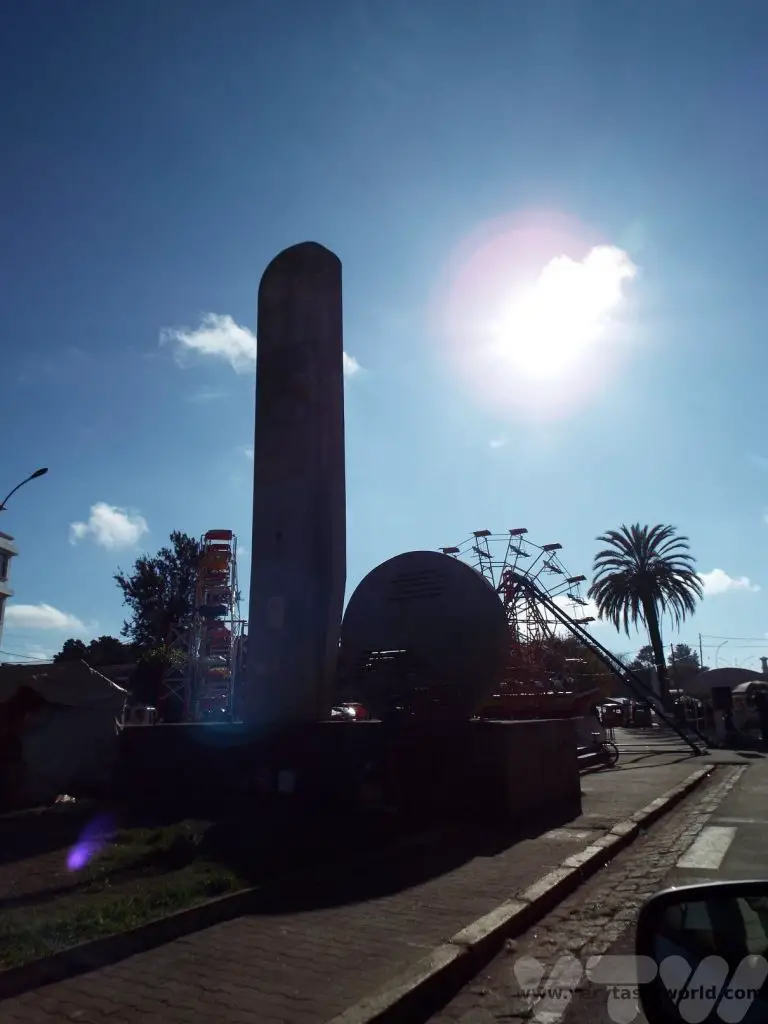
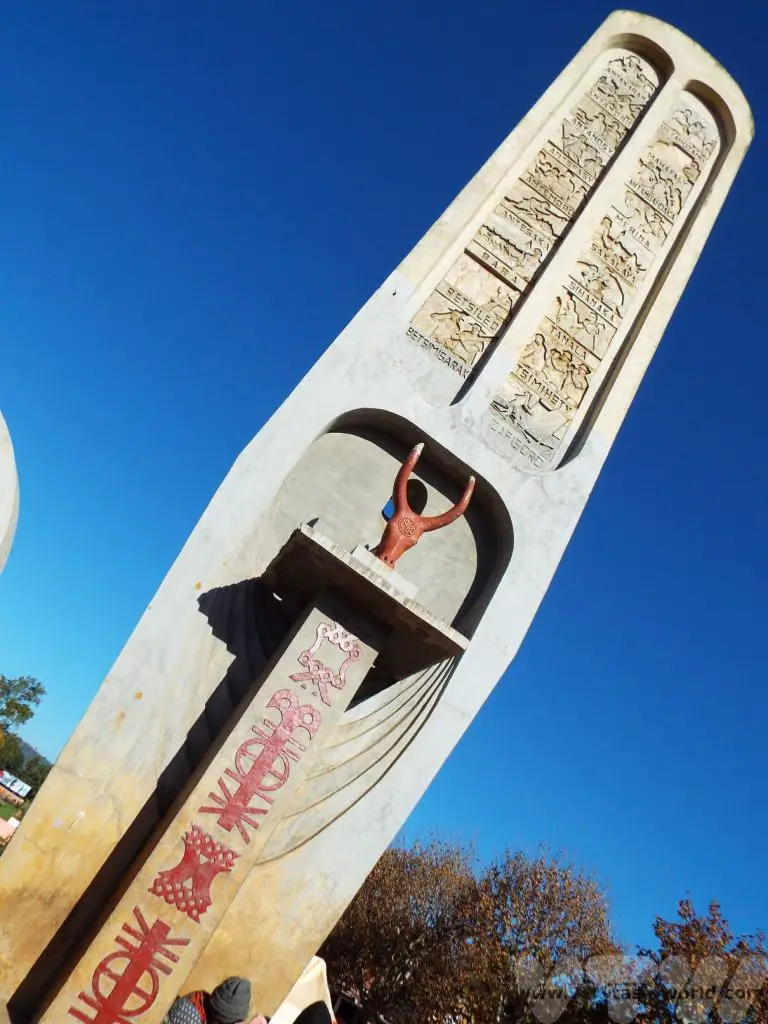
The RN7 then takes us to Madagascar’s sprawling capital, Antananarivo.
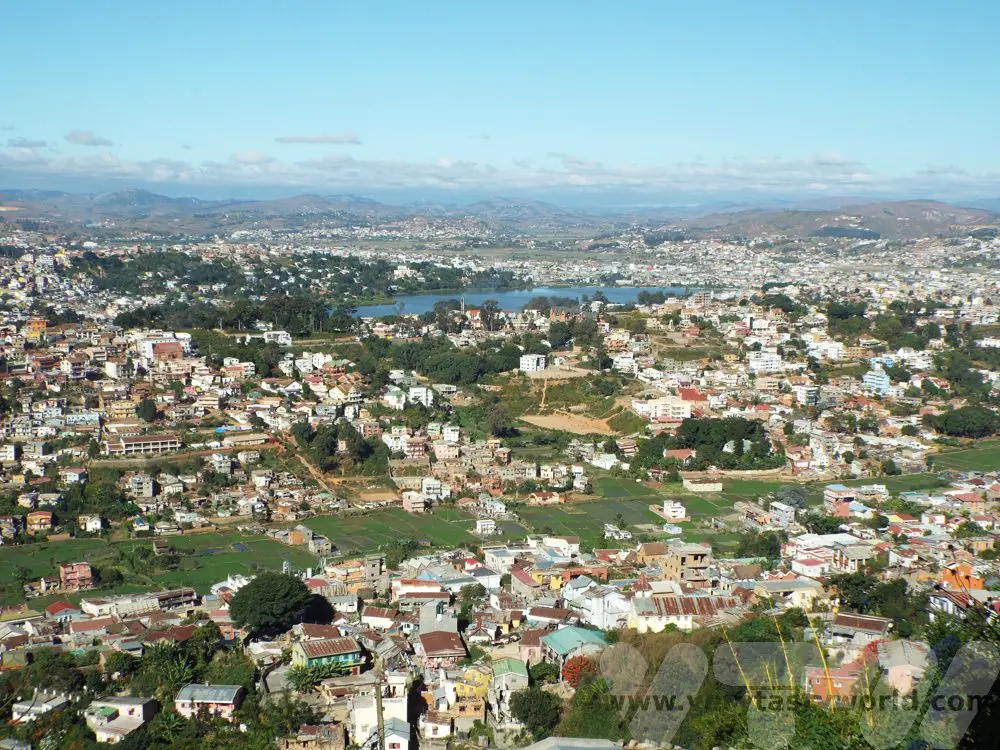
This trip along Madagascar’s RN7 took a week to complete. While we were in the country we also spent some days in the east, driving along RN2 to explore the rainforests in the highland regions. We’ll write about that another time…
Traveller Tips For Madagascar
What Is The Food Like?
We plan a much longer post on Malagasy food in the future but here’s a brief overview.
Firstly, most of the hotels we stayed in offered European food. We found this to be really disappointing as we always want to try the local fare. That said, many hotels were very happy for us to go off-menu at breakfast provided we ordered a Malagasy breakfast the night before. So we often enjoyed rice porridge with zebu steak or meatballs – a delicious, filling start to the day.
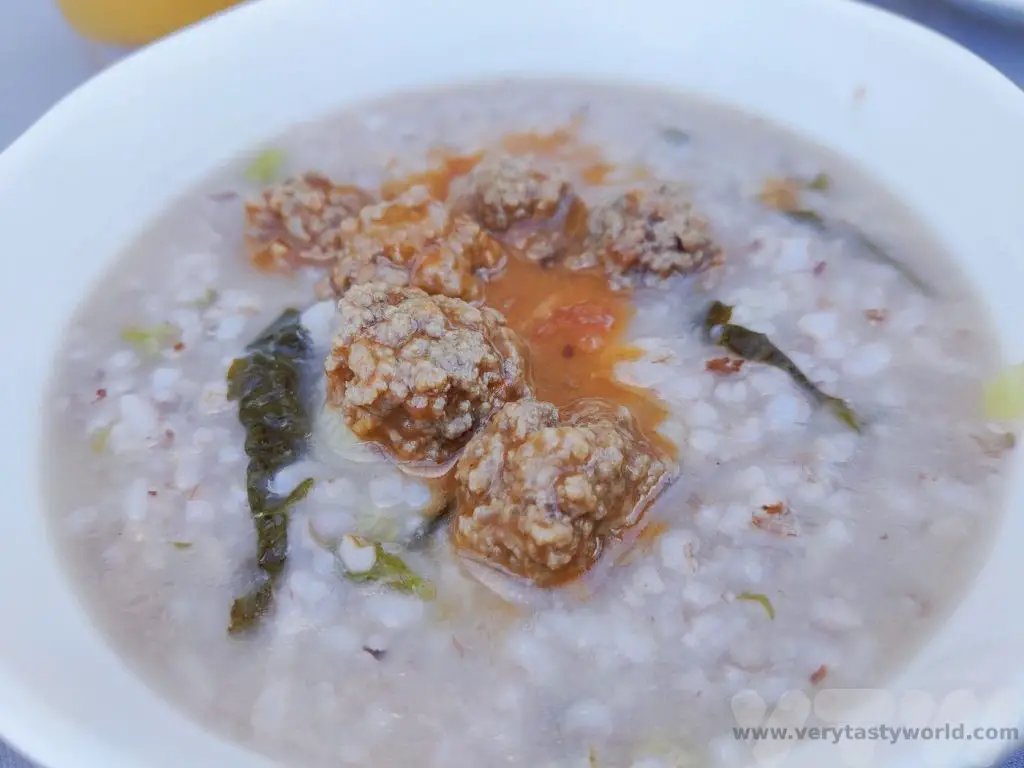
Malagasy people love rice. It is eaten for breakfast, lunch and dinner and in enormous portions. We have big appetites but had a standard portion of rice was too much for us, so we generally shared it between us.
Zebu is a popular meat. It tastes just like steak. Zebu hump is a delicacy – it’s meaty and slightly fatty but very soft. Zebu skewers with a nice cold THB beer are a perfect snack food.
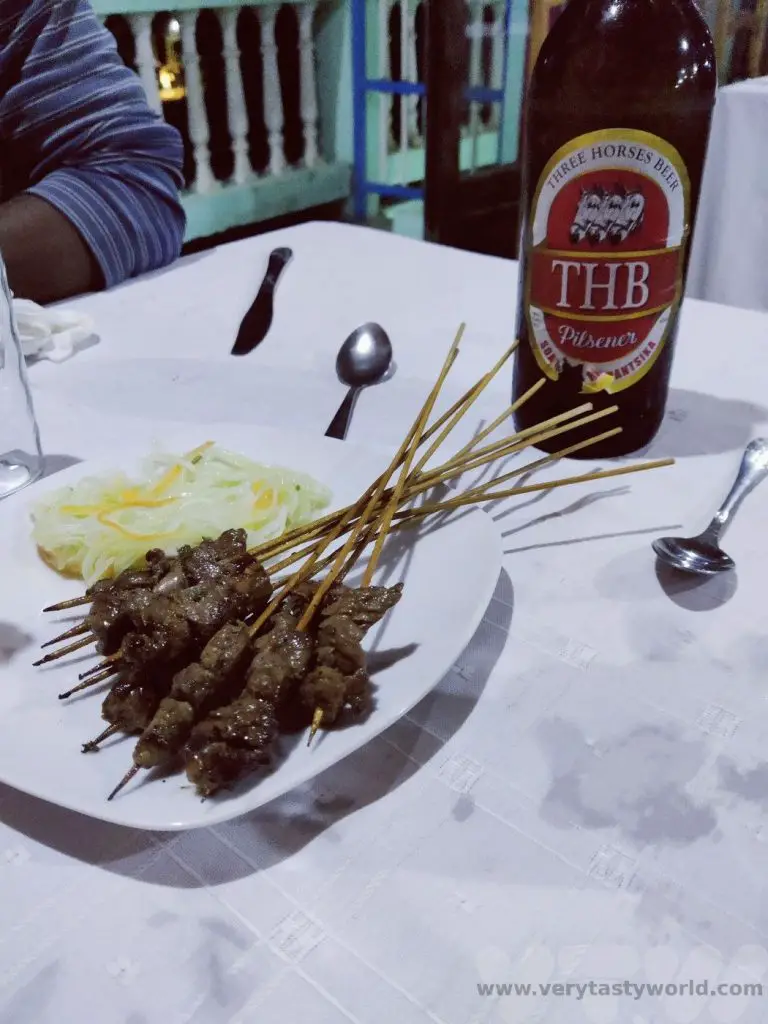
The local tipple is rum. We would see distilleries along with RN7. Rhum Arrangé is a wonderful way of drinking it. This is a great jar of rum infused with different flavours – vanilla, coconut, lychee, tamarind, ginger, mixed fruit, local fruit such as tapia amongst many, many more. We did our best to try as many variations as possible.
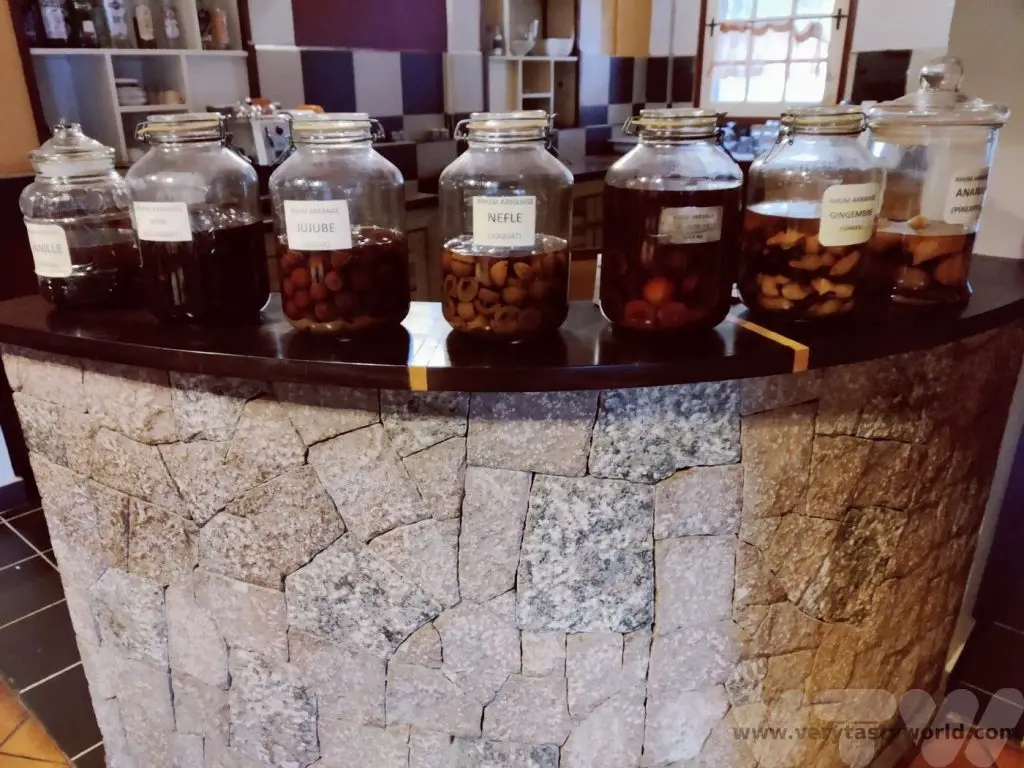
How Do You Get Around?
We booked a tour with a local company who were excellent. They provided a 4WD and a wonderful driver-guide, Farley, who knew his way around the country. The roads in Madagascar can generally be described as awful. Think of the biggest pothole in your local street? That’s nothing compared with Madagascar – some of the potholes in the roads are like craters. This makes driving very slow and occasionally extremely bumpy. To make up for this scenery is wonderful. If the government could do one thing to make the country more accessible it would be to fix the roads.
It is possible to hire cars and the RN7 is probably the best road for a fly-drive trip if you want to drive yourself. That said, some of the national parks were located several kilometres from the main road and towns were extremely busy with all sorts of vehicles to drive around. We often love driving ourselves when we travel, but were very glad that we had a driver, who knew the roads well, on this trip.
Public transport is available if you are feeling hardcore. The buses are generally mini-buses that are usually bursting at the seams – luggage goes on top and people fit into the vehicle. The buses will be a lot slower than private cars.
The national airline Air Madagascar can transport you between major cities. It doesn’t have a great reputation for timeliness but it has a good safety record and we found the service to be fine. We recommend giving yourself a bit of leeway in terms of arranging connecting flights. We were extremely lucky that, when our international flight arrived 14 hours late, we managed to get an internal connection thanks to receiving lots of help from our tour company.
What is the Language of Madagascar?
Local people speak Malagasy, which is derived from a number of languages, and French, the language taught in schools. Most hotels and tourist attractions will have someone who can speak English.
Any attempt to speak Malagasy will be appreciated. These are the words we picked up.
Hello – salaam (salaama, salaame also work but don’t say salami!)
Thank you – misaotra
Slowly, slowly – mora mora (be careful, mola mola means crazy!)
Delicious – matsiro
Can I drink the water?
No, you will need to use bottled water. It is cheap to buy – around £3/$4US for 8 x 1.5L bottles and all towns will have a store that sells water. Some hotels do provide water. And the tour company we travelled with supplied us with 1.5L each per day. We also recommend brushing your teeth using bottled water.
How Do I Get Money?
Money was a bit of an issue in Madagascar. The unit of currency is the Malagasy Ariary. Cash is king and there were only a very few places where we could use credit cards. Even gift shops at tourist attractions are largely cash only. ATMs are available but only in large towns, so make sure you get enough cash to get by between towns.
There is a cashpoint at the airport and we recommend getting a reasonable amount of money on arrival, although even then there was a restriction on how much you can withdraw – it wasn’t enough for the entire trip. The notes dispensed will be 20,000 Ariary (around £3.50/$4.50 at May 2023). These are actually large denominations and we found it difficult to get change from a large notes when spending them in shops or restaurants. Hotels were quite helpful at changing these for smaller notes, but bear in mind that it’s worth getting hold of those smaller denomination notes if possible.
Is Tipping Expected?
We were expected to tip our guides and this was fine, we incorporated it into the cost of the trip. The going rate at the time of travel (May 2023) was 20,000 Ariary per person per day. What we didn’t quite expect was that, along with guides who took us through the national parks, spotters were also employed. These lovely people would run through the rainforests and national parks looking out for interesting wildlife and then phoning our guides to let us know where to find them. They were brilliant and thanks to these spotters we saw a lot of wildlife. So it’s worth planning extra cash for tipping the spotters as well.
Are There Any Health Considerations?
There aren’t many dangerous creatures in Madagascar but undoubtedly the mosquito is one of the most hazardous. Malaria is prevalent throughout the country. We used DEET jungle spray and slept under mosquito nets. Unfortunately we did get bitten because we are strawberry-flavoured to mosquitos who just love munching on us. Like Achilles’ vulnerable heel, just a little bit of flesh exposed to the elements and they were feasting on us – so we also took anti-malarial pills. We recommend speaking with your healthcare professional before travelling. And, obviously, take any prescription medicines you need.
Packing Essentials For A Madagascar Trip (aside from your usual clothes and things)
Good walking shoes or boots. We recommend wearing these on your flight just in case your main luggage doesn’t arrive.
Waterproofs – rainforests are called rainforests for a reason!
Swimming gear – there are hot springs and natural pools to go swimming in. (You could also bring a travel towel but our hotels were happy to lend us additional towels.)
Torch for night walks. A head torch is often useful as well. The power did go out briefly a couple of times in some of more remote regions.
Binoculars for viewing wildlife, especially if you are interested in birdwatching.
Camera with a good zoom lens and quick shutter speed to captures those leaping lemurs.
Sun protection – sun hat and suncream.
Usual medication and talk to your doctor about anti-malarial protection.
Jungle insect spray which contains at least 50% DEET.
Will I See Penguins in Madagascar?
No! While the Hollywood movie raised a lot of awareness about this magical country, you won’t find penguins in Madagascar. Neither will you find any of the Big Five game animals of Africa. But Madagascar’s wildlife is unique and emphatically worth travelling to see.


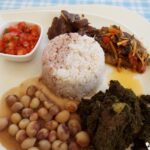
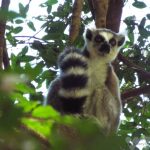
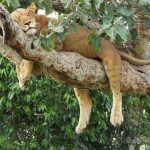
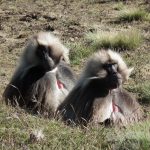
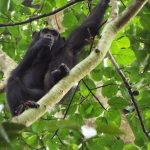



What a wonderful trip. You managed to combine seeing the wildlife, the natural environment, artisan workshops, trekking, road trip and food all into one trip. Quite a feat!
The ability to stop off and meander and then indulge in some local craftwork gave you such variety on your exploration.
The fact that this main road goes from one end of the island to the other and passes through so many areas of interest was a dream road trip.
The “what to take” list is really helpful- I had never thought of a torch or binoculars and really see how these are essential on this type of trip now.
I have thought about exploring Madagascar and wondered how I would do it, given that its not a small country and has limited infrastructure. Now I know and will bookmark this for my trip there.
It really was a wonderful trip. Madagascar has so much to offer and we were astonished with the diversity of the landscapes we travelled through. It was really nice to be able to experience Malagasy culture as well. Glad the packing list was helpful!
What an amazing trip! Madagascar is already on my bucket list but, honestly, this post has pushed it closer to the top. Your photos are so good – I love the little ‘dead leaf’ gecko!
I’m a big fan of a road trip too so, when I eventually make it here, I’ve got the perfect guide.
Thank you so much! This trip was much delayed from 2020 but was so worth it when we finally got there. Hope you get to visit, Madagascar is a really special place.
Another fantastic blog post, the wildlife certainly appeals especially the carnelians and lemur…
Thank you so much. Yes, the wildlife was absolutely fascinating.
Wow, this looks like my perfect road trip with great landscapes of different regions, unique flora and animals, local culture and lots of lemurs! I had no idea that Madagascar was so diverse. I just added it to my “Eastern Africa” future trips file.
Having a driver seems a very sensible way to do this trip. It makes sense to use guides and spotters, too. It is a skill to spot animals in the wild, as I learned when I went into Peru’s Manu Rainforest several years ago. I would have missed so much without them.
Thank you. You’re absolutely right about it taking skill to spot animals in the wild, so we were very happy that we had the spotters. It was also nice as it provided additional employment for local people. Madagascar has so much to offer in terms of its unique wildlife and fascinating culture.
I’m fascinated with Madagascar. Taking a road trip on RN7 looks and sounds like a beautiful scenic drive with lots of wildlife.
Thank you. The RN7 is the classic route but you get to see so much amazing wildlife along the way and it’s amazing how the landscape changes.
When I think about Madagaskar, I think about amazing wildlife and landscapes but not about road trips. Good to know that you can hire a driver and don’t have to drive yourself. I guess this adventure needs to be one new item on my bucketlist…
Thank you! Yes, it’s a great place for a road trip although the roads are the bumpiest we’ve ever encountered. But the scenery and the wildlife more than made up for it!
You had a fantastic adventure in Madagascar: great pictures and a trip. I love wildlife, so I would love to see this island because it must be a photographic paradise. I want to do a Mora Mora road trip to see all the places you described. Great tips on how to organize such a trip on the island. Chameleons, lemurs, baobabs, sandy beaches, what a view! I haven’t heard of Isalo National Park and Ranomafana National Park before, but I’m adding them to my bucket list. I would also like to see the Anja Community Reserve.
Thank you. If you like wildlife, this really is the place to visit – there are so many species that are unique to the island. We knew we would love the lemurs but were absolutely charmed by the chameleons and geckos as well. We do hope you get to visit one day.
Another dreamy post and delightful read 😉 It’s wonderful to experience Madagascar through your road trip. The fauna and flora is one big playground for any aspiring citizen scientist and of course a place to practice mon francais lol. Thanks for taking me to Madagascar – a special place indeed.
Jan – https://flyingbaguette.com/
Thank you so much for your kind words! Or should I say, merci beaucoup! Madagascar really is one of a kind – we absolutely loved our encounters with the wildlife – both flora and fauna – and the landscapes were just sublime.
Lemurs! I just want to see lemurs. Since I was a kid I’ve wanted to visit Madagascar. It looks fantastic and such a great road trip. Good tip about the busses though, that doesn’t sound as fun. The wildlife viewing (not counting mosquitoes) would be my main reason to go here, strongly followed by buying as much vanilla as I could get my hands on.
Thank you! Actually, our motivation to visit Madagascar was very similar to yours – wildlife viewing and vanilla. And it really didn’t disappoint. The lemurs were really marvellous and we couldn’t stop watching them. But we also loved the chameleons and geckos as well. Do hope you get to visit, we are sure that you will love it.
Okay, I never thought about road tripping Madagascar but it looks like a great way to see the country! I love all the African wildlife and I know Madagascar has some really unique wildlife. I think I would hire a driver to show me the way as I would end up very lost haha.
Thank you! Yes, the road trip was a fantastic way to see the country, although the roads were challenging. But the scenery and wildlife more than made up for it! We were very glad to have a driver – he was delightful and really knew his way around.
I was intrigued from the moment I started reading about your logistics (as usual!) thanks for including the info that you went on a guided tour rather than organising and planning this yourself. I can imagine the road conditions to be very tricky and 5-6h can become a very long time then. I would prefer to split those two long sections that you had. 4h per day would be enough plus you want to explore and that’s not possible if you sit in the car all day. I take it the tour also organised the hotels. Would you have chosen them yourself, too or maybe preferred a local stay?
Carolin | Solo Travel Story
Madagascar is a wonderful country but travelling through it is not easy and the infrastructure is very different to that we are used to. Unfortunately splitting the road trips would be really difficult because you could drive for the 4 hours but then end up in a tiny village with no chance of finding anywhere to stay or much to see other than rice fields. You really need to drive between each location and the roads are slow. So our plan was to spend those long days on the road to reach the places of interest, followed by a day or so exploring with no driving at all. If the potholes in the roads could be mended, driving times would reduce dramatically. (We recently read of a blogger who was travelling by bus and took 5 hours to cover 50 miles!) This is why mora mora is an appropriate moniker to use for the style of trip. Hotels-wise, when we plan a tour with a company it’s an iterative process – we discuss the options and are offered a choice. Local stays would be very difficult to do, especially in the countryside.
“Mora mora” is such a great motto for travel. The baobab trees are so unique and I can’t believe they might be up to 5000 years old. Madagascar may not have the traditional Big Five, but the lemurs and chameleons are pretty cool too. Looks like an awesome road trip!
Thank you! Yes, you have to travel mora mora in Madagascar. Driving is slow but the scenery is spectacular. We knew we would love the lemurs but weren’t expecting to find the chameleons and geckos so fascinating! The baobab trees were amazing!
What a dream… and what a fabulous adventure! I really want to visit Madagascar and this article made me want to visit it even more.
You managed in one article to cover culture, activities to do, wildlife, how wonderful!
I believe it’s not exactly an easy country to travel through, since the infrastructures are not those we’re used to, but it’s undoubtedly a spectacular adventure!
The photos are magnificent and illustrate well the diversity and beauty of the country!
Thank you for your kind words. It really was a fantastic adventure! It isn’t easy to travel through Madagascar but it was incredibly rewarding. It is a truly beautiful country and the wildlife and culture were fascinating.
Such a fascinating trip! I loved reading about your adventure. Your pictures are incredible and I can certainly understand why a tour is necessary. I imagine the planning could be a bit overwhelming otherwise (plus there is so much to learn from an experienced tour guide). Disappointed there were no mis-located penguins, haha.
Thank you! Because we are always short on time a tour really was the best way for us to travel. The company were absolutely excellent and really helped us out when our flight was late arriving. Yes – absolutely no penguins to be seen, even misplaced ones, but the wildlife we saw was amazing.
So cool you got to see all those lemurs in the wild. We lived next to a big lemur sanctuary in NC and it was a lot of fun seeing them there. I’m excited to see your post about the food there when it comes out.
How lovely to live close to a lemur sanctuary. They really are wonderful creatures, it was a privilege to get to see so many in the wild on this trip. Working on the foodie post, we’ll shout out when it’s ready!
This article was very adventurous and fascinating. I enjoyed reading about the RN7 Madagascar road trip, and seeing the photos of the amazing landscapes, wildlife, and culture. I agree that this road trip is a great way to discover the diversity and beauty of Madagascar, and to experience some of its most iconic and scenic places.Thank you for taking me on this incredible journey.
Thank you so much. The RN7 really is a fantastic way to experience Madagascar – it is a fascinating journey.
Great guide. The trees always did it for me. So different and beautiful. One day I will get there!
Thanks so much for your comment. You’re right – while the lemurs are often the great draw, the trees are so interesting and so different to any trees we’ve seen before.
Thanks soooo much for this!
Lots of new and useful info – especially about the food and money.